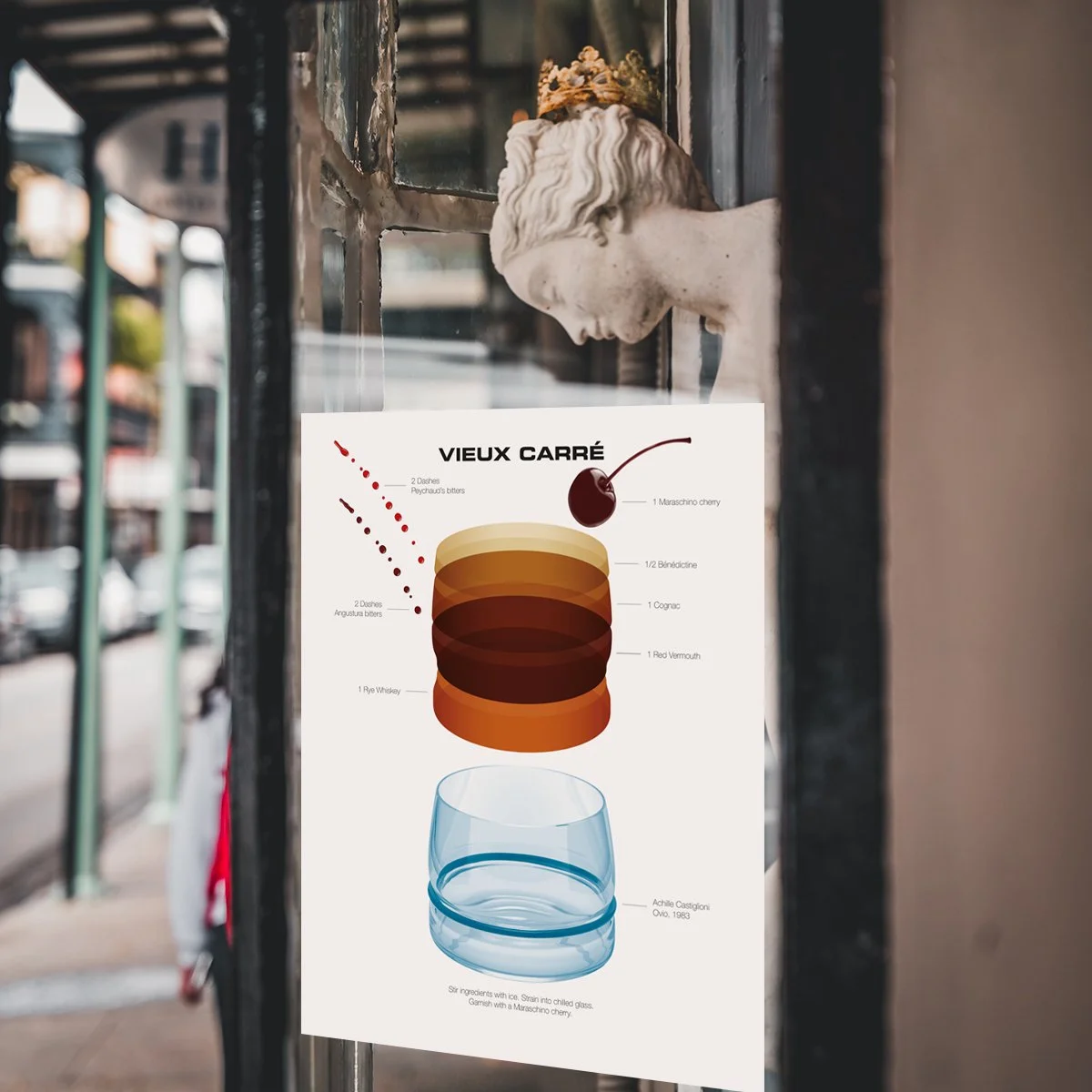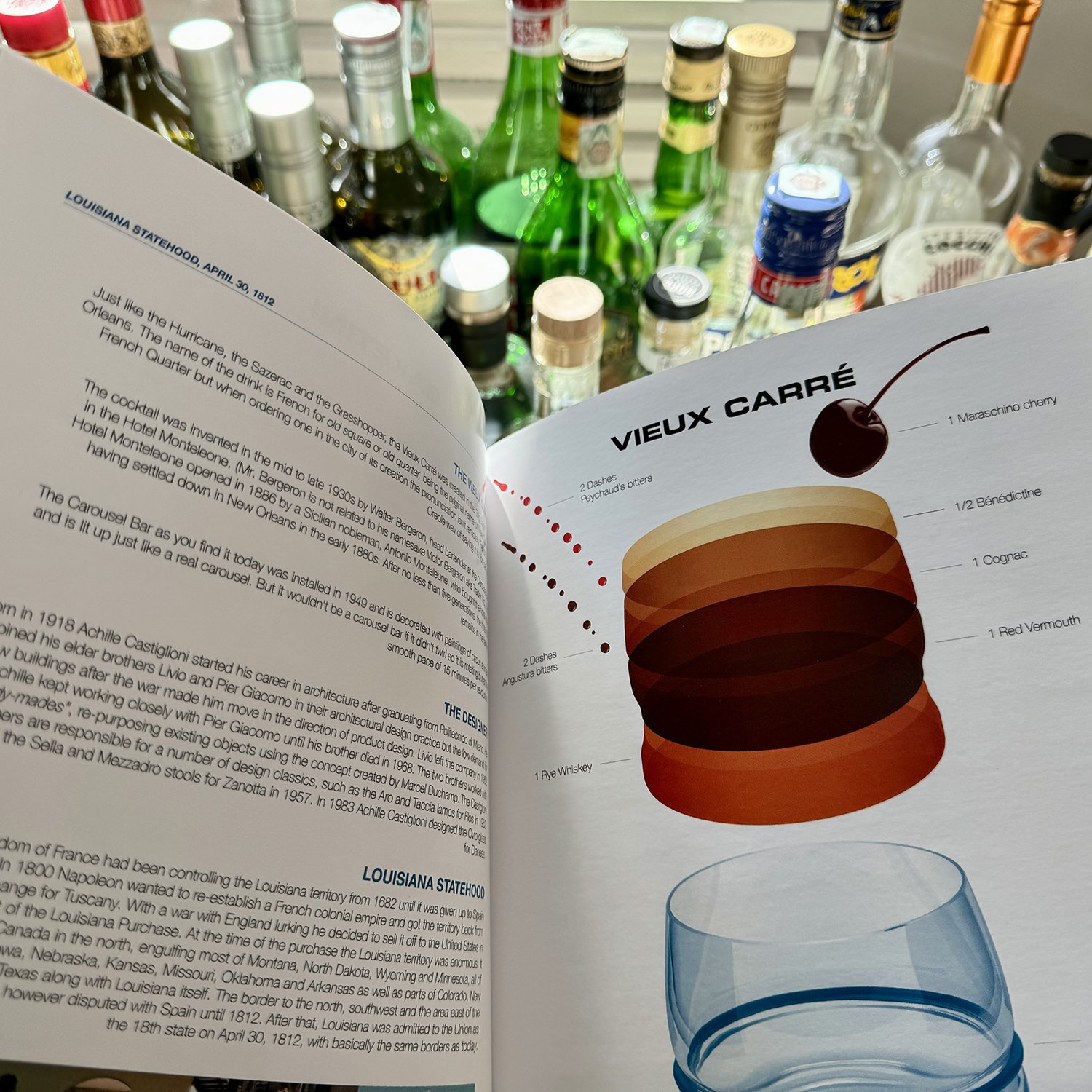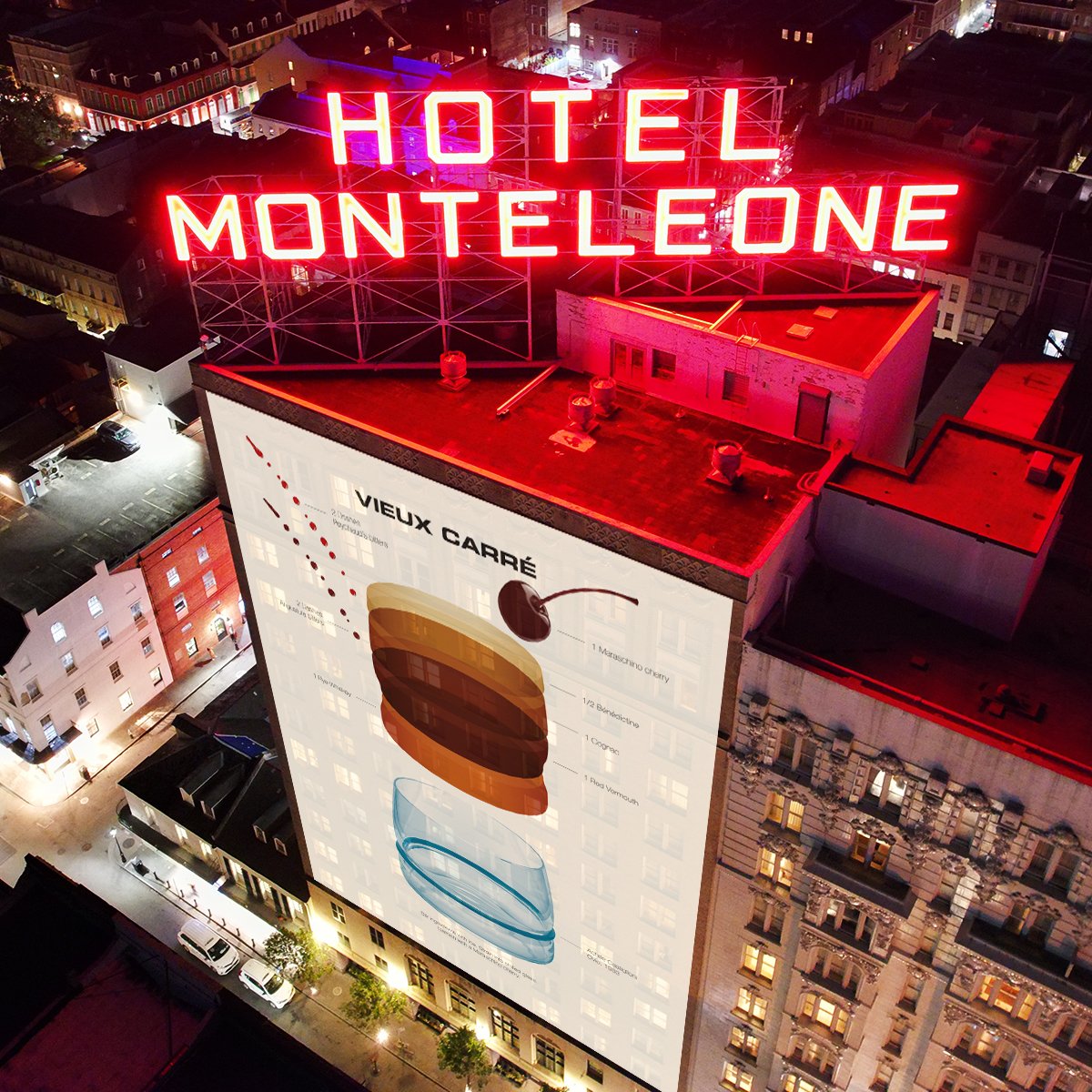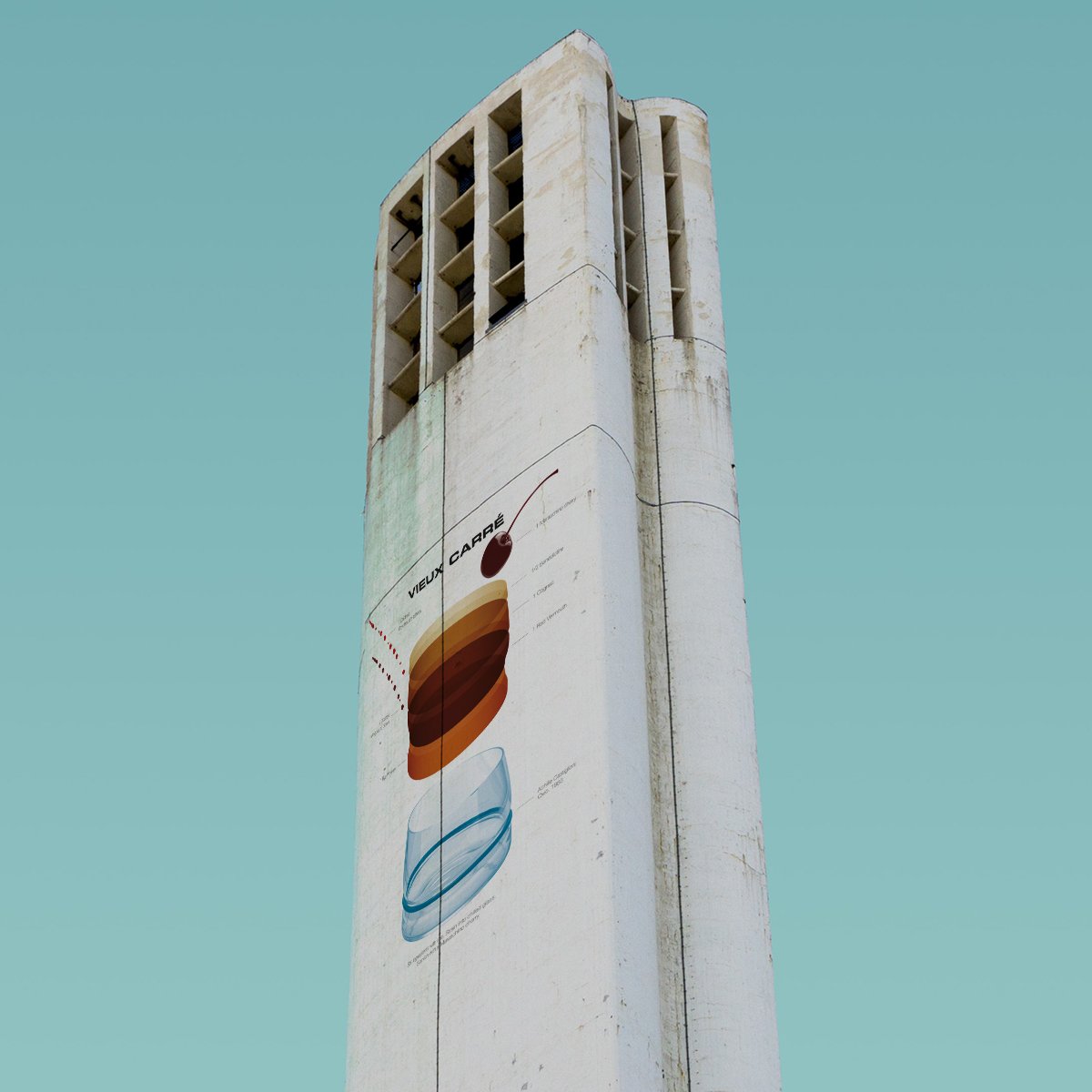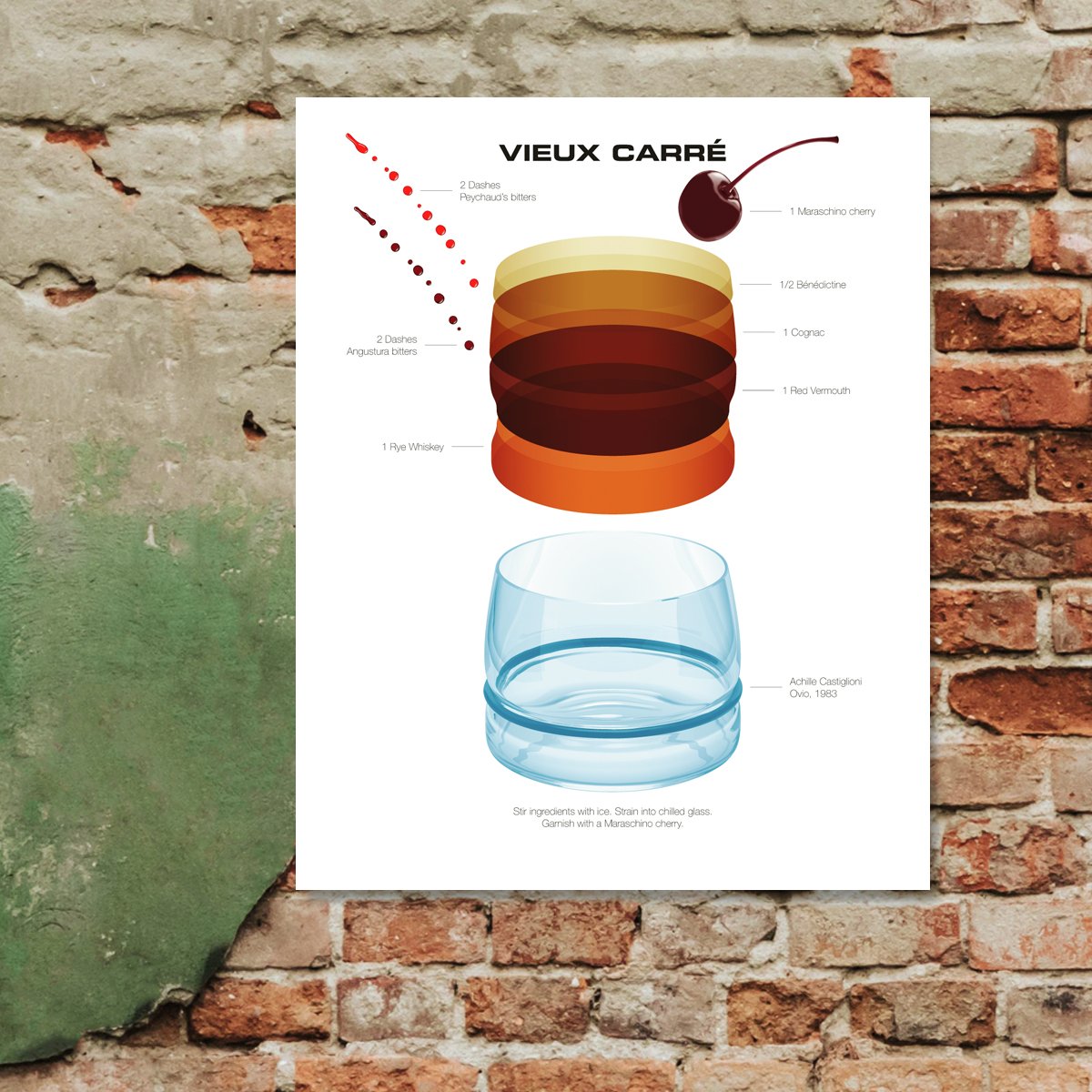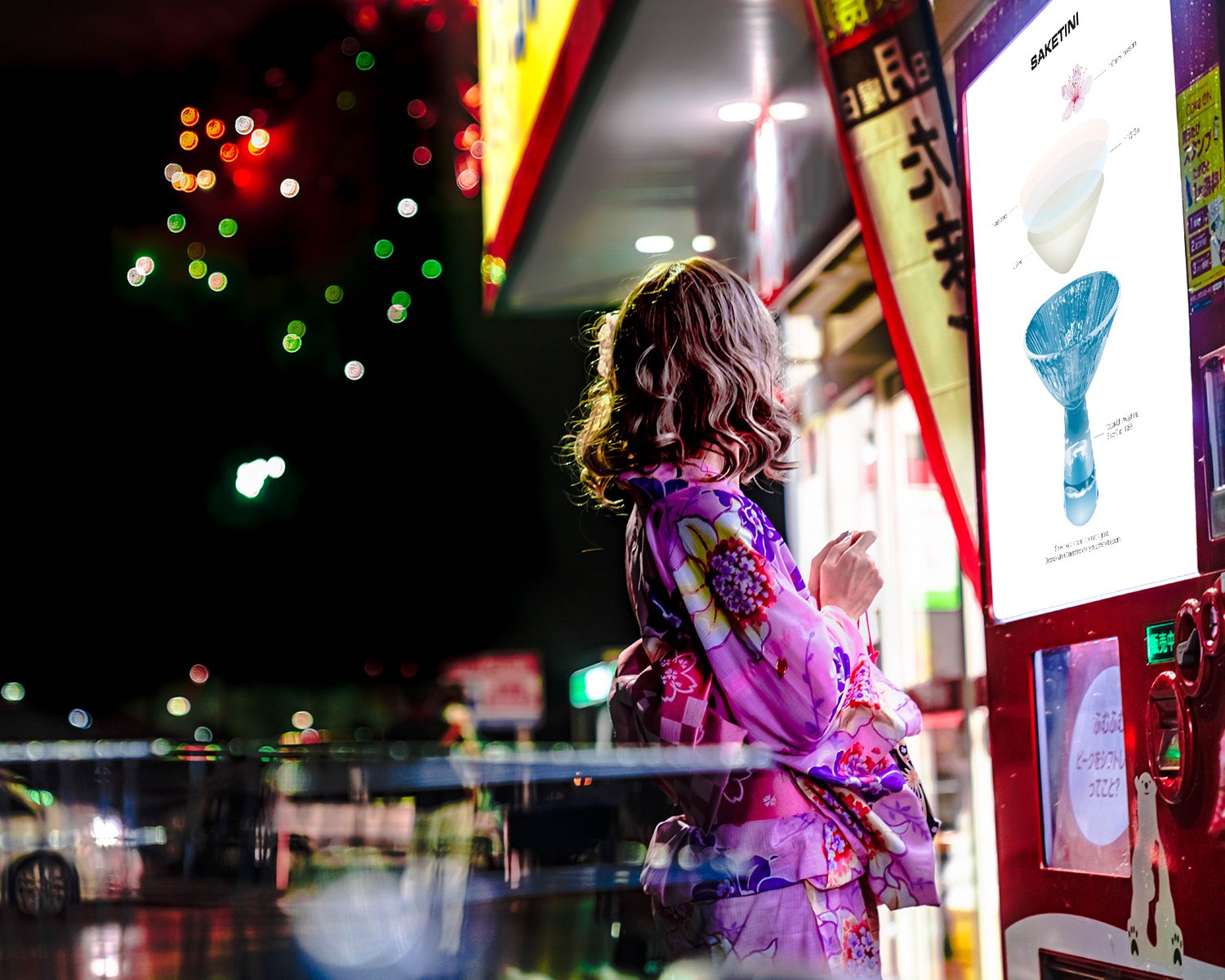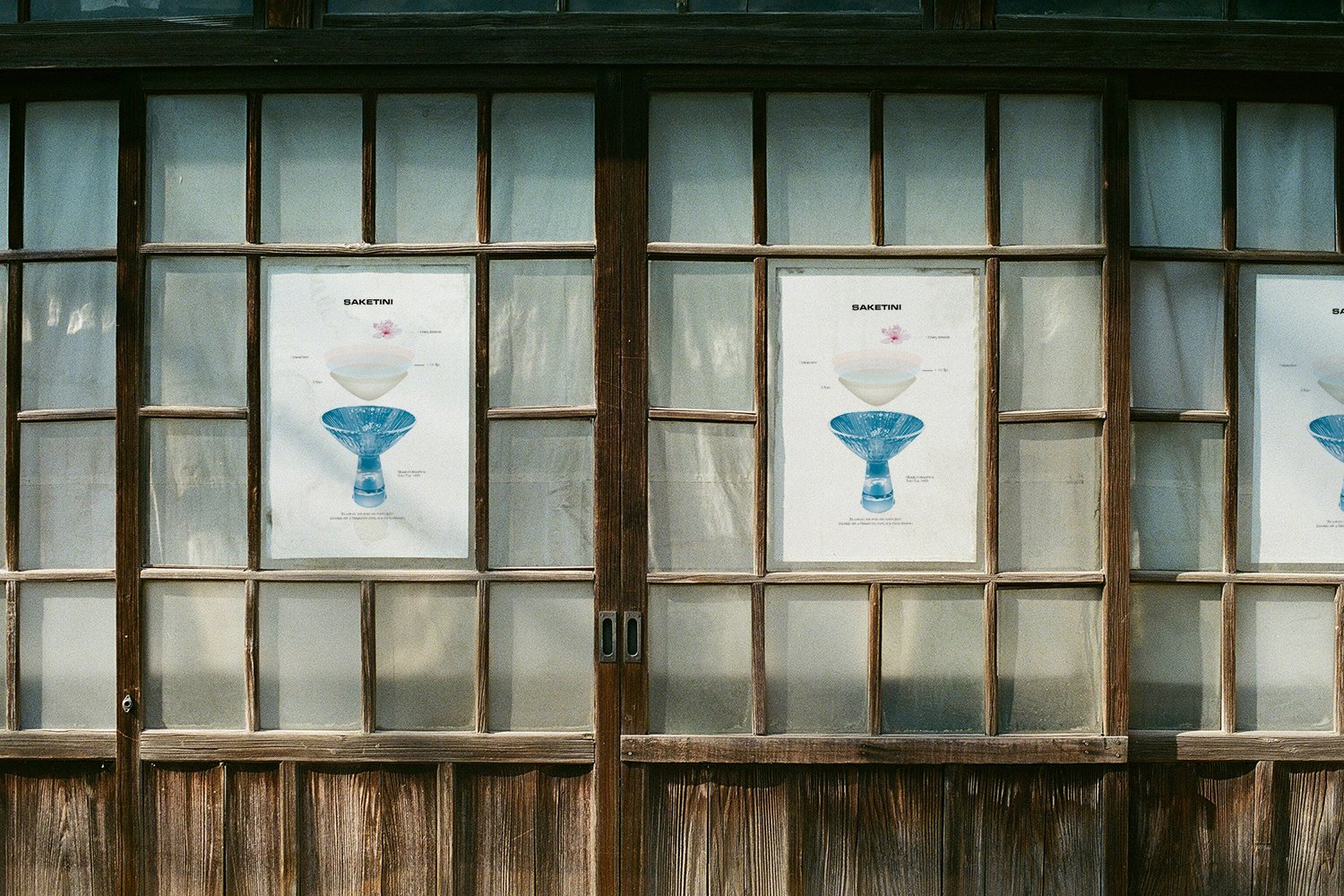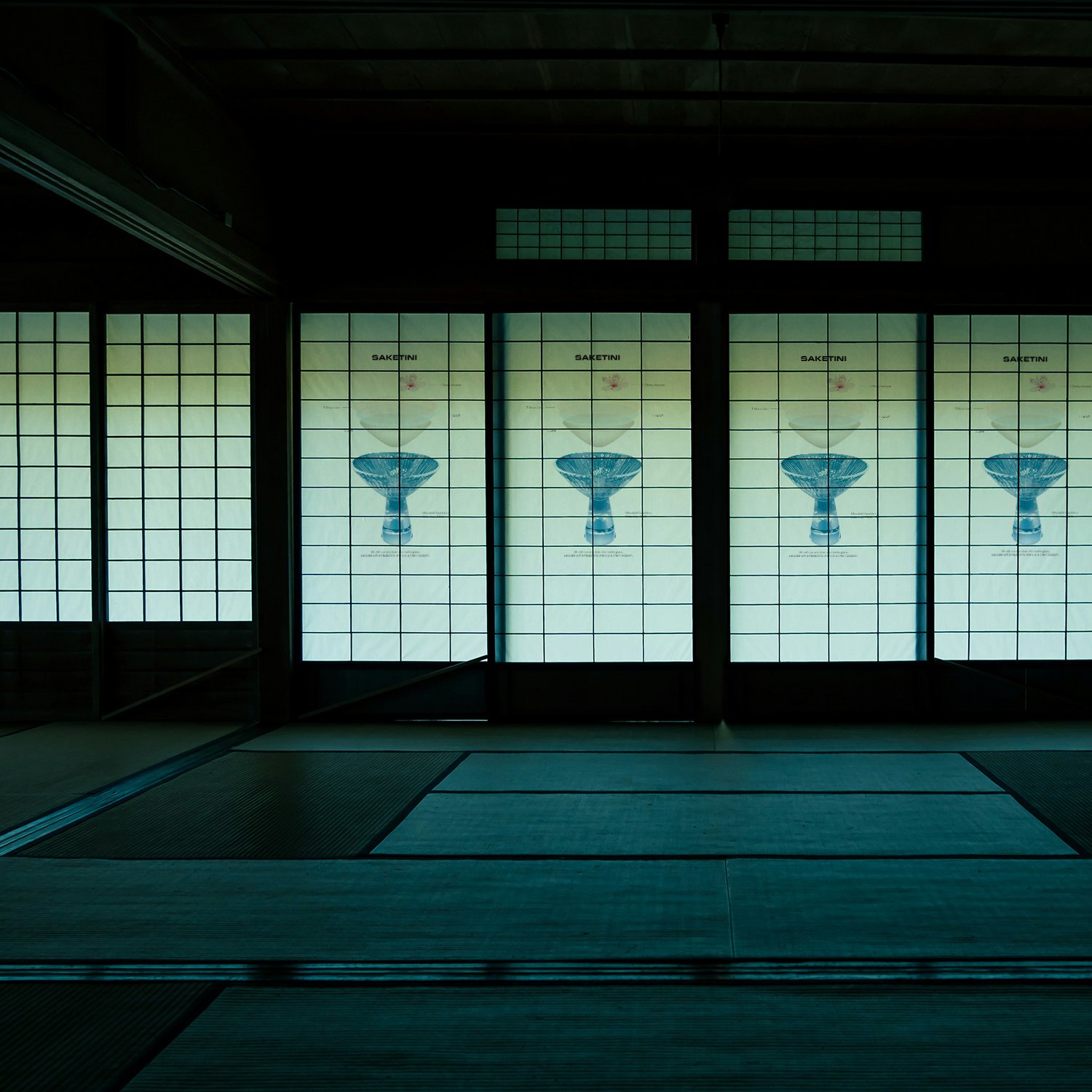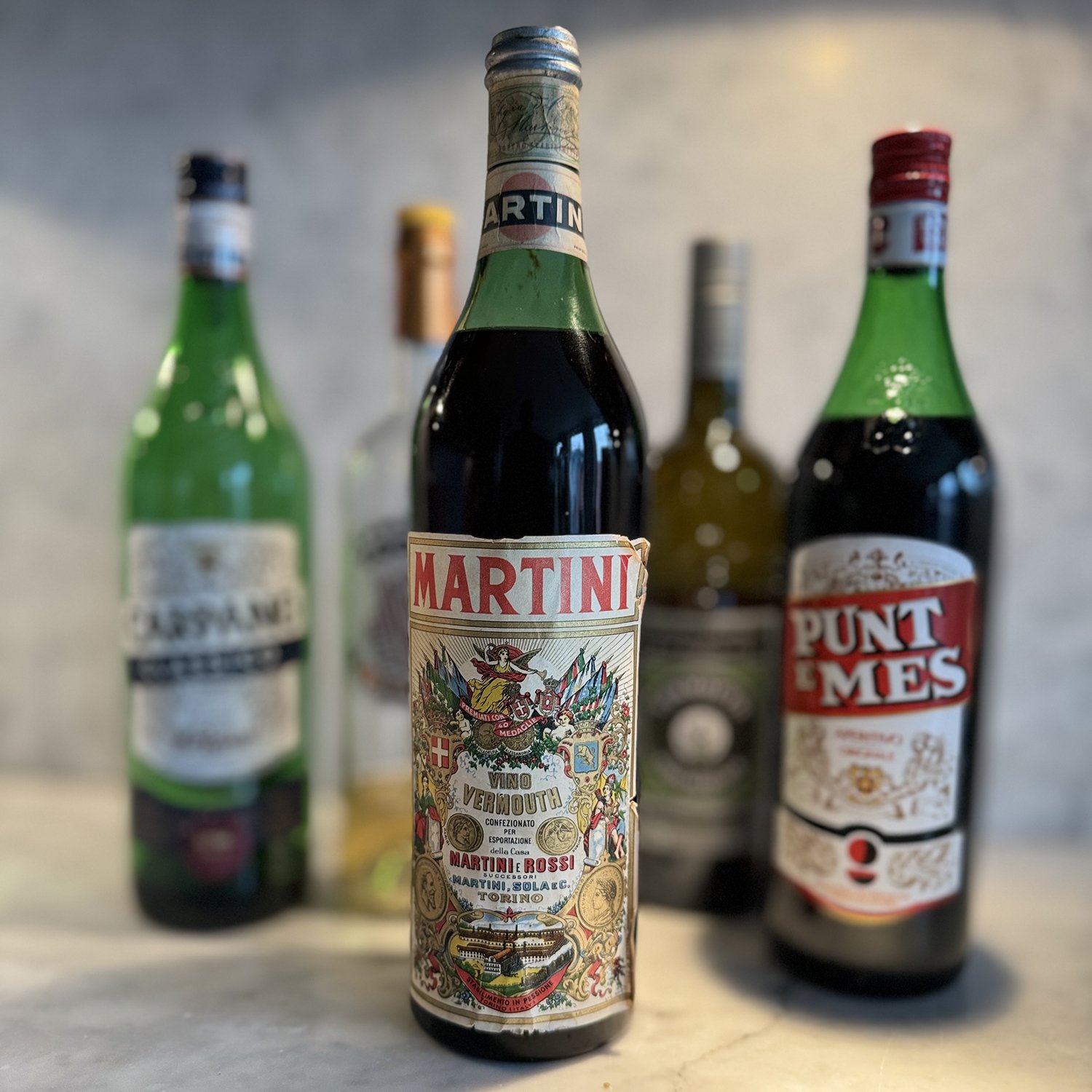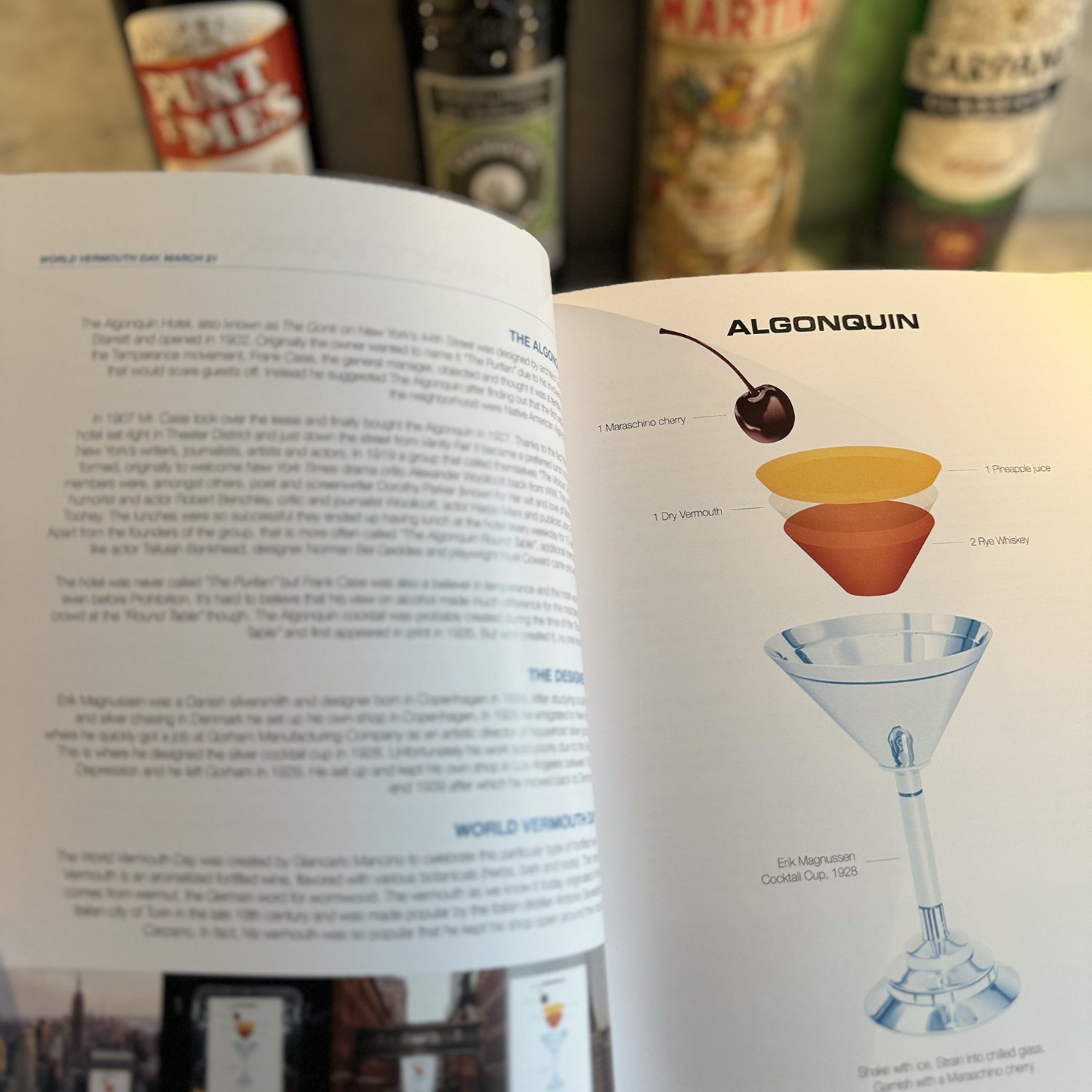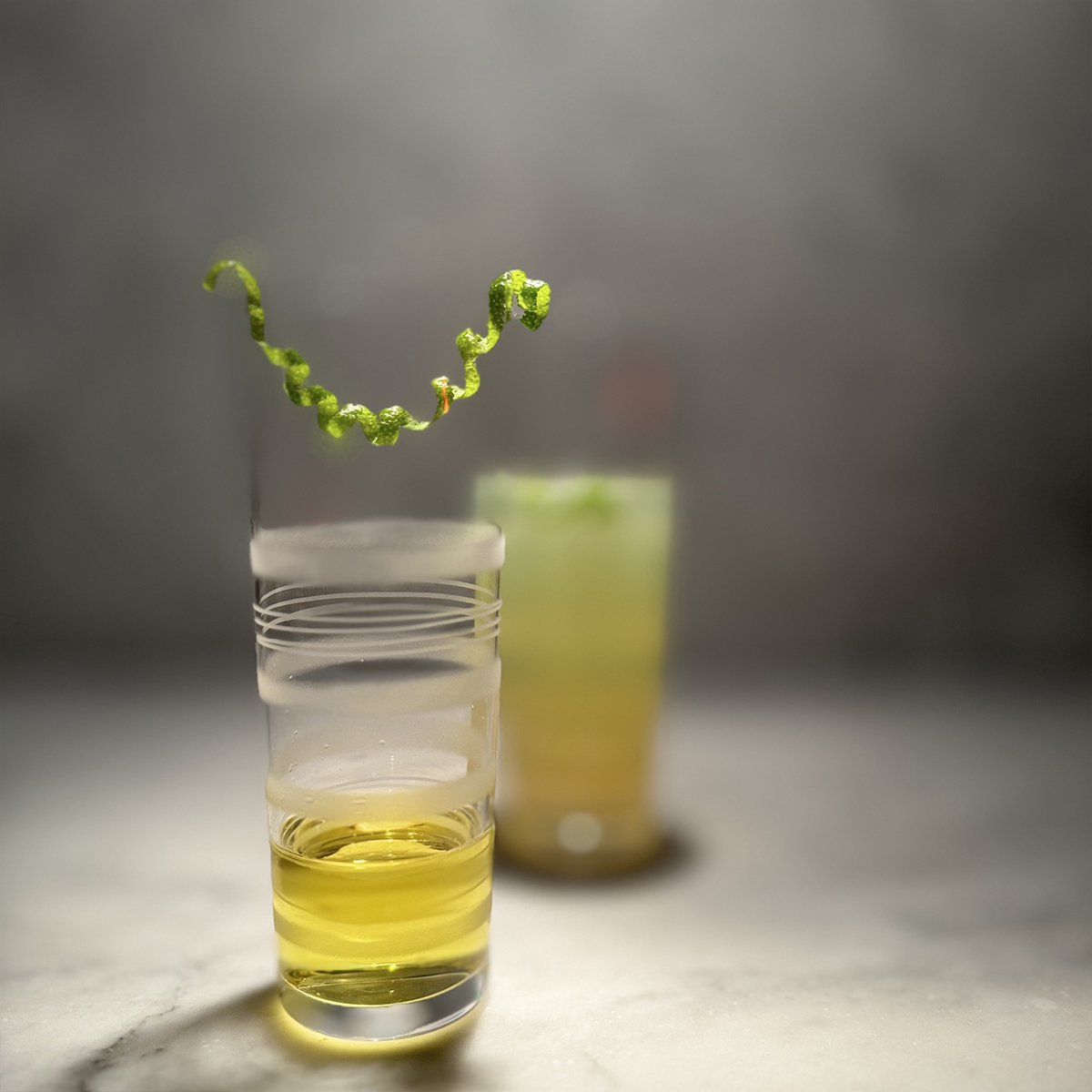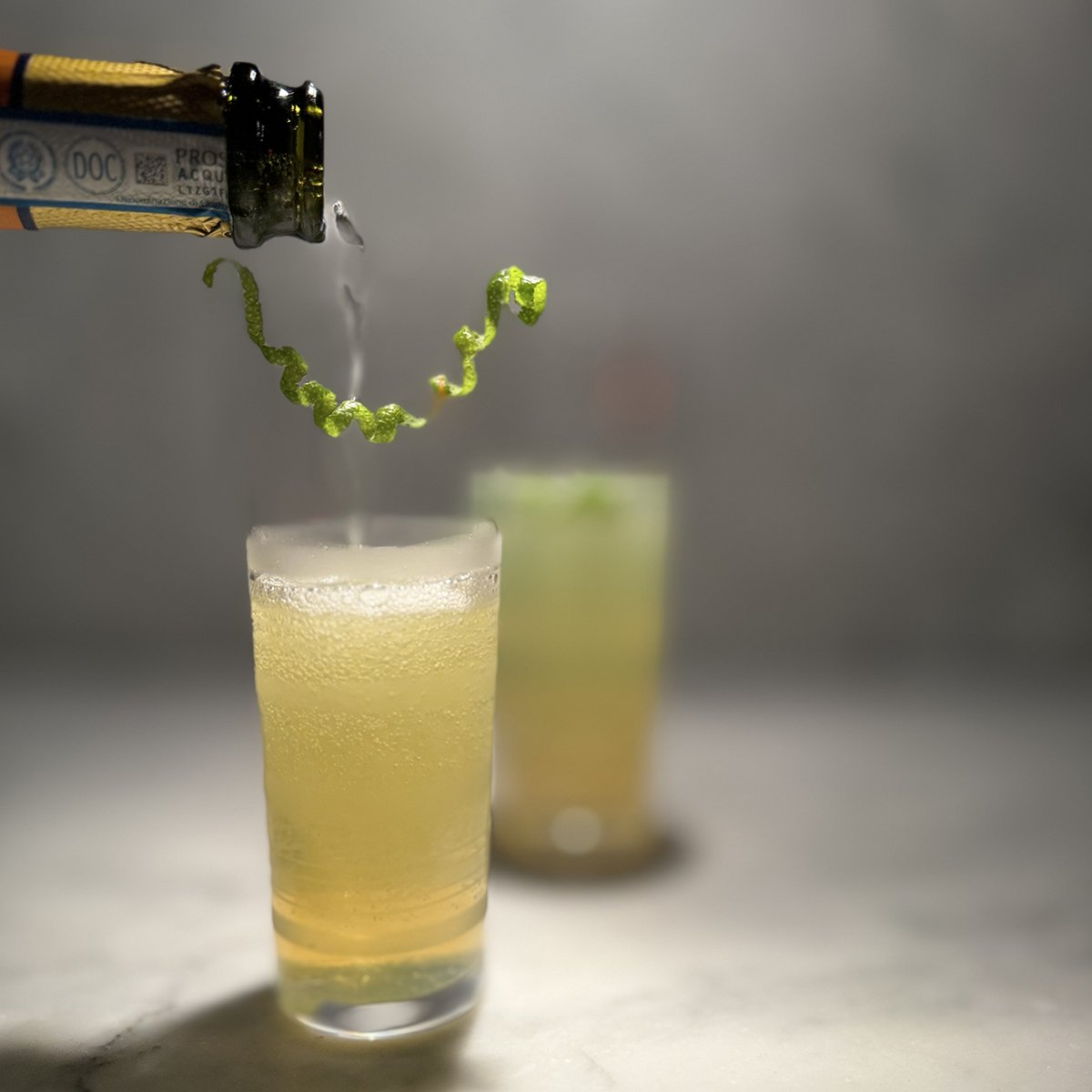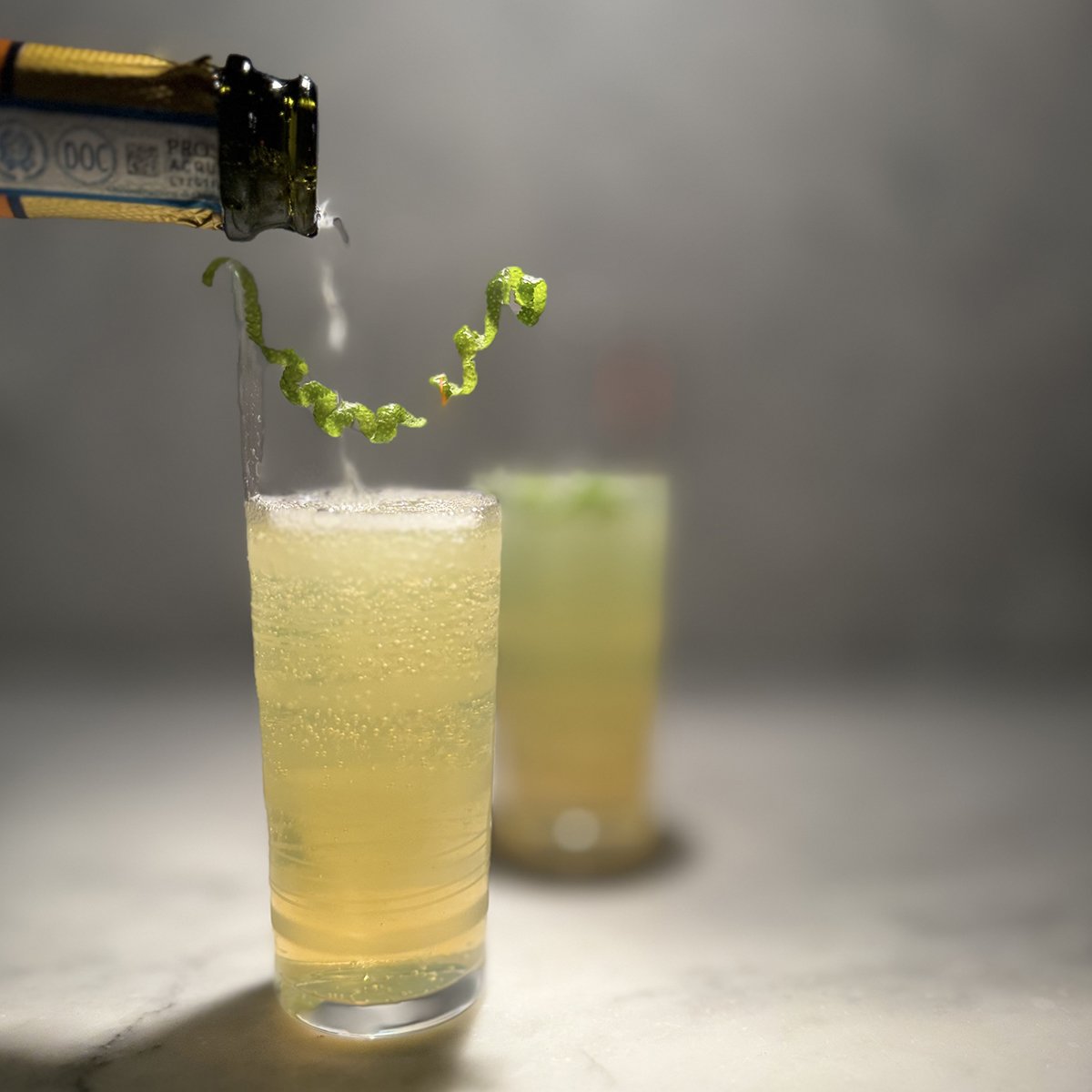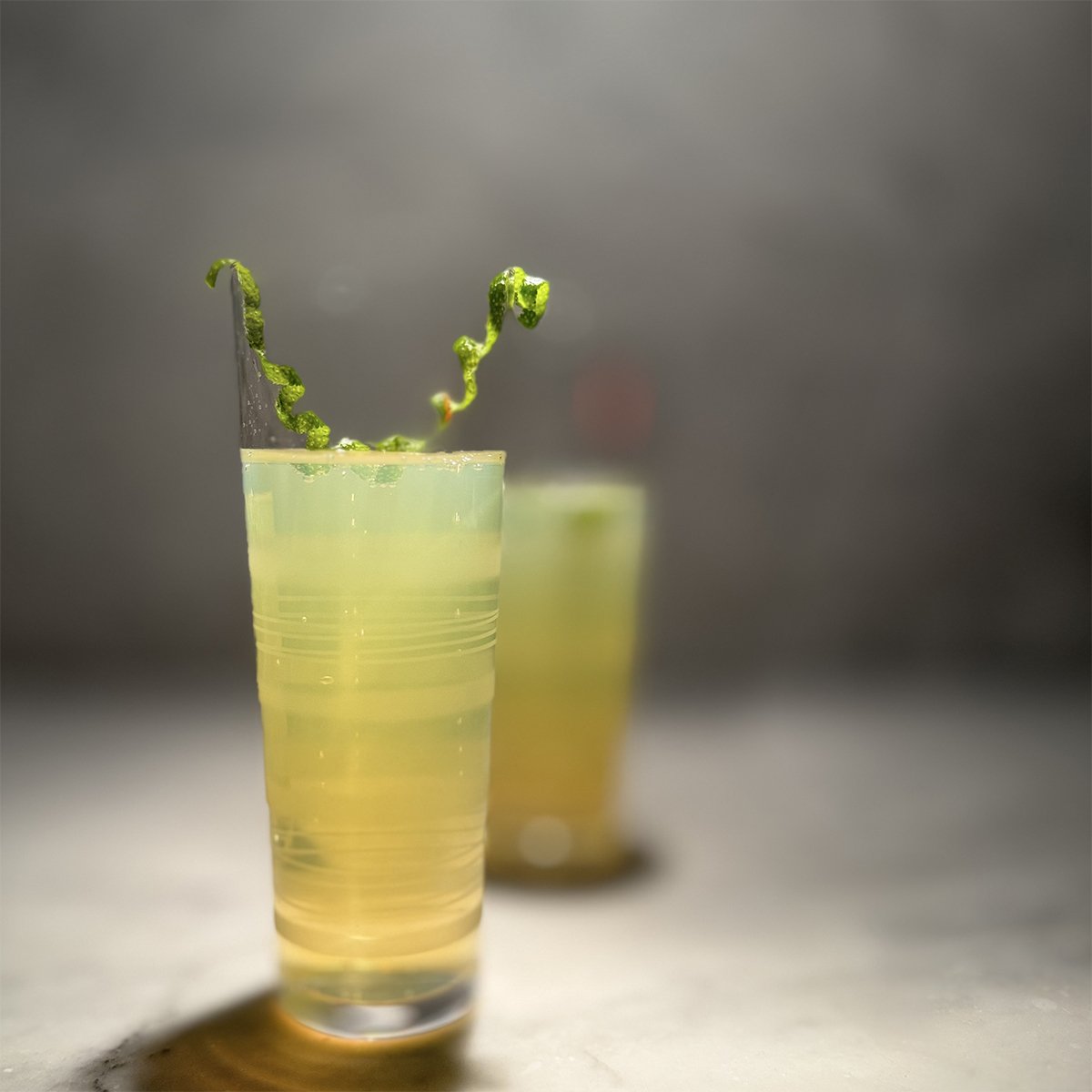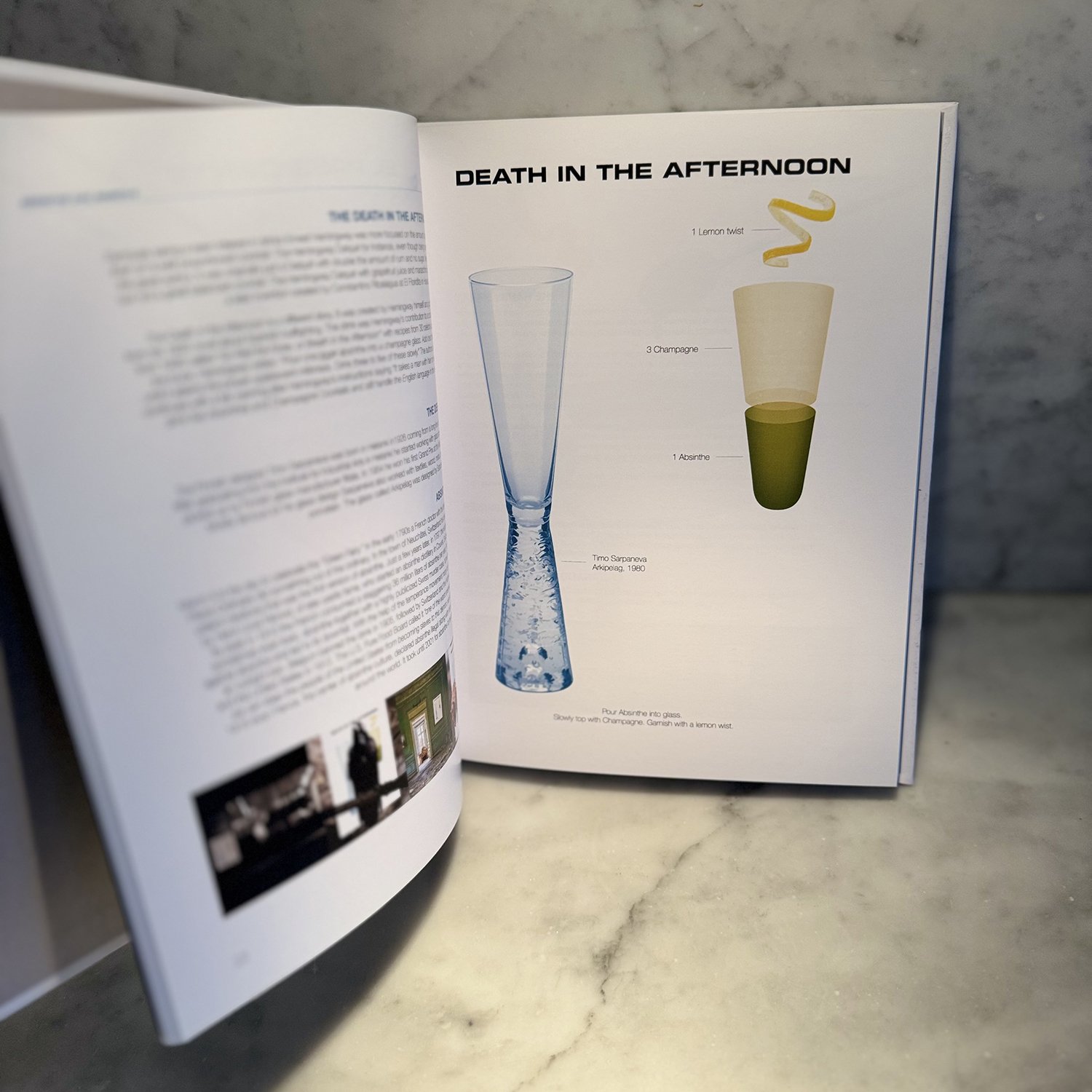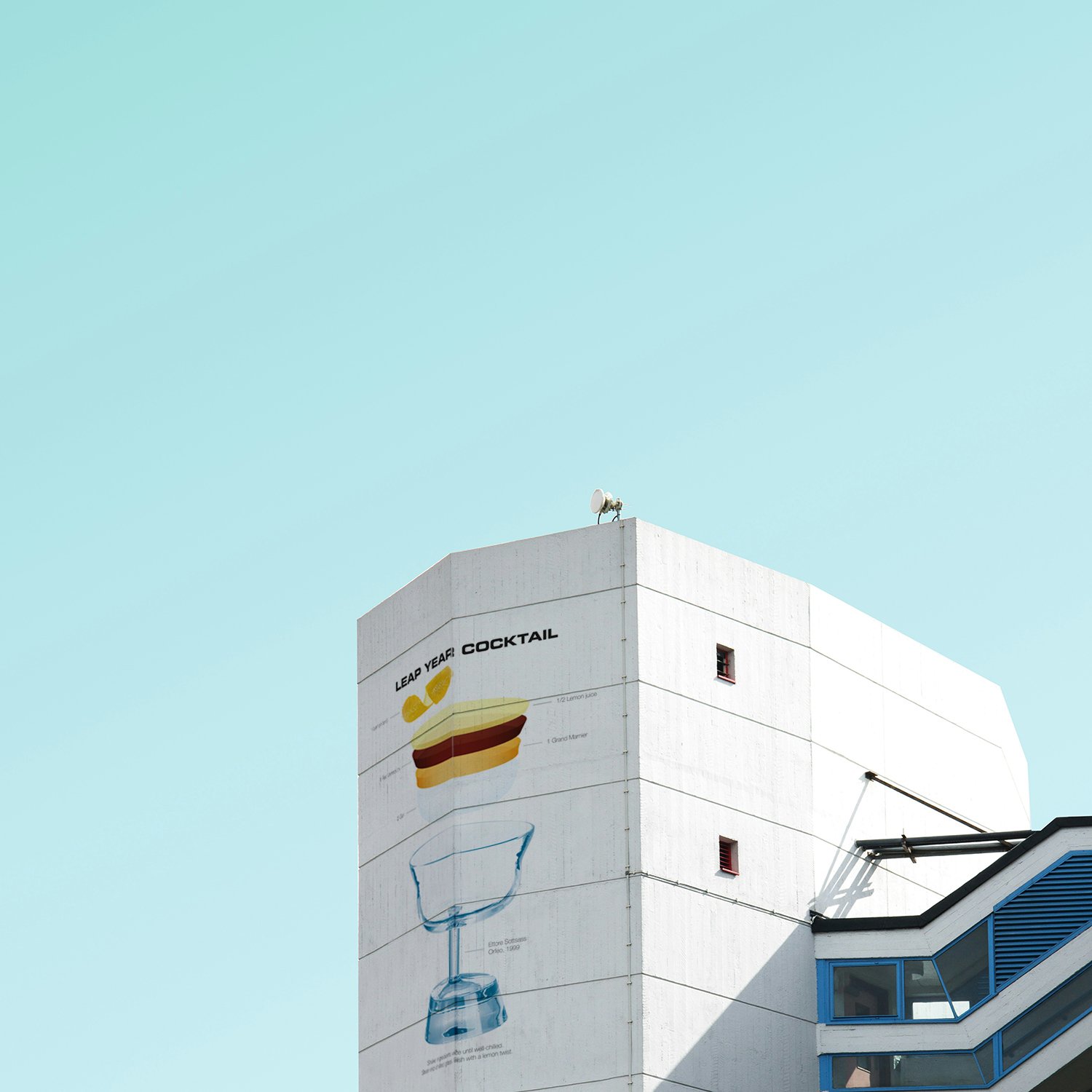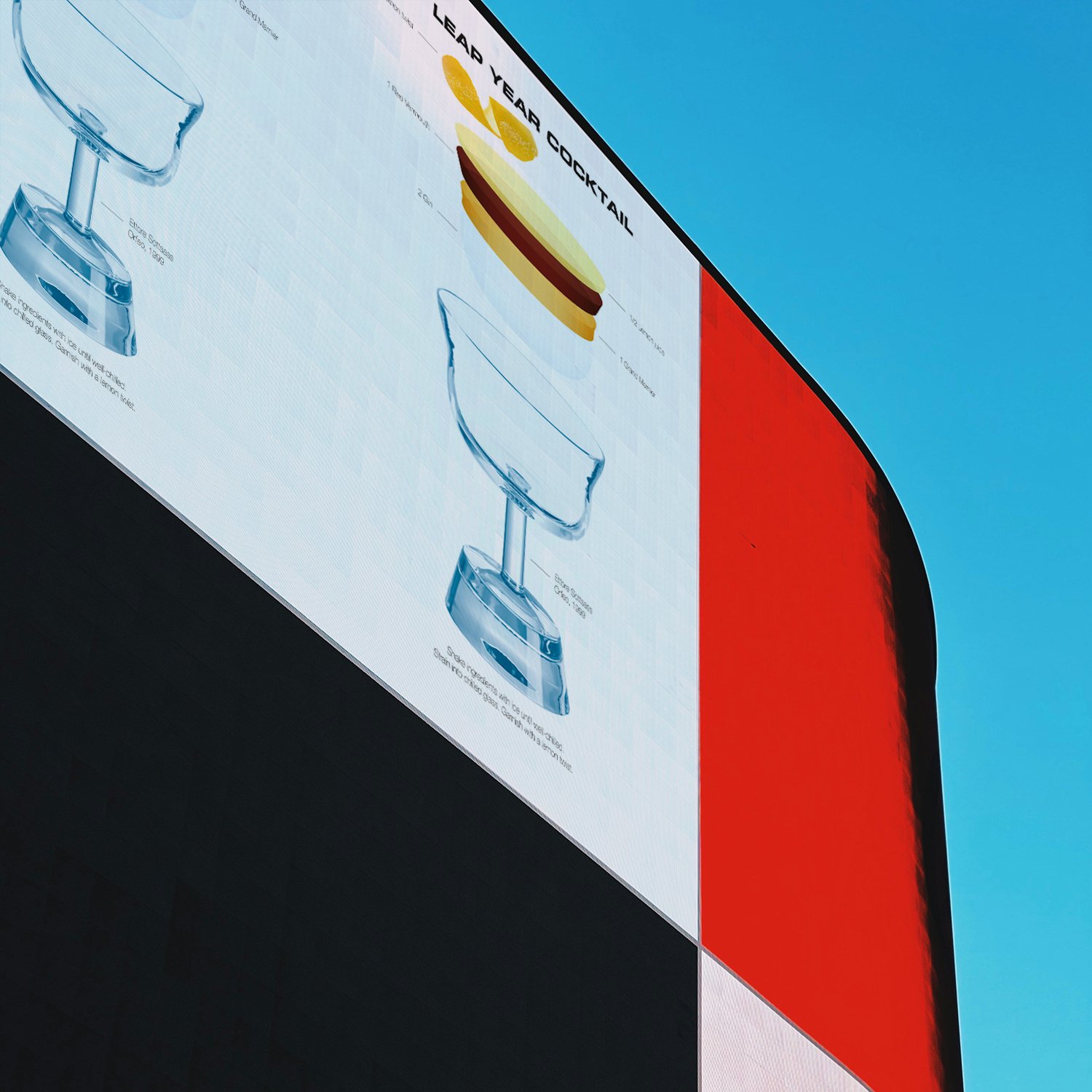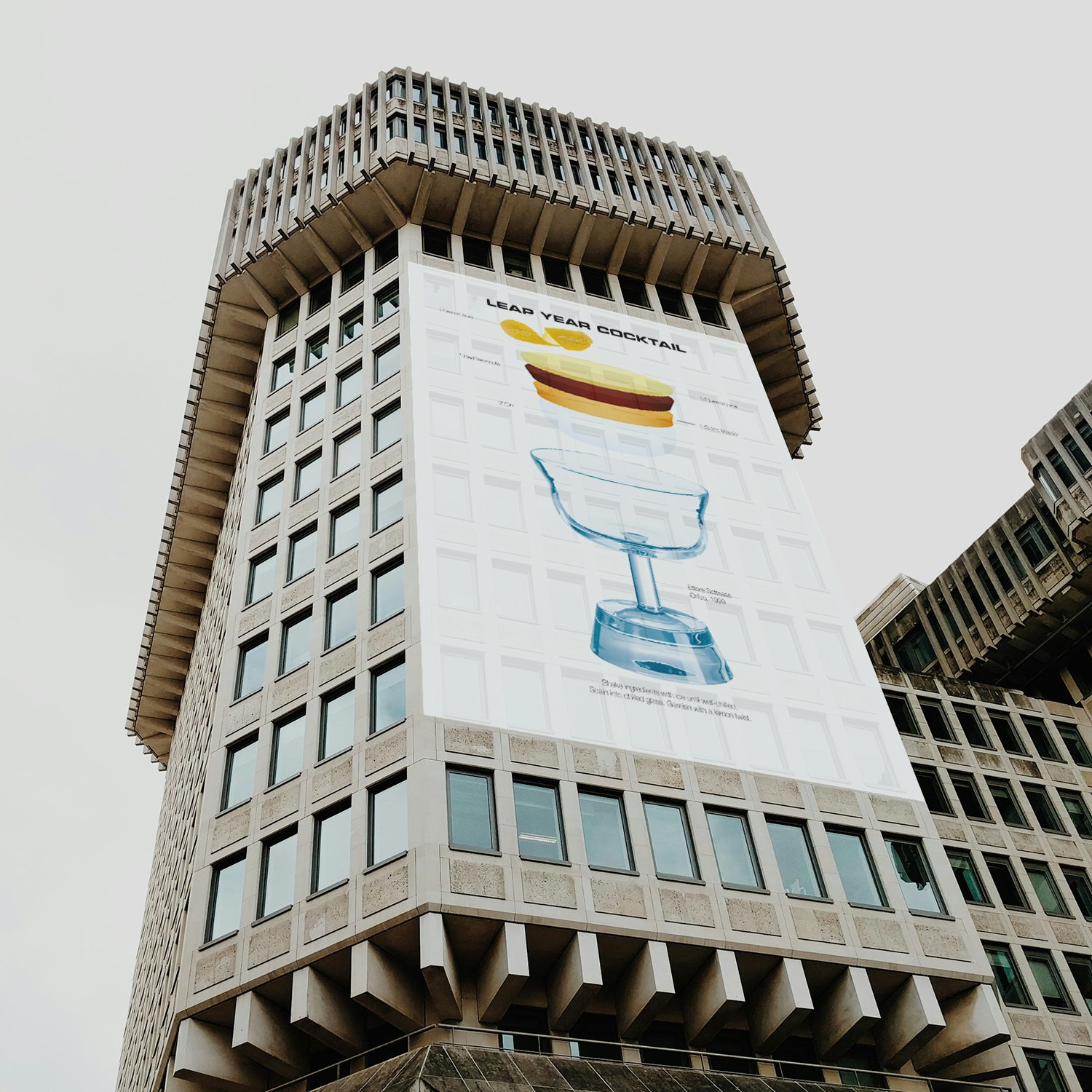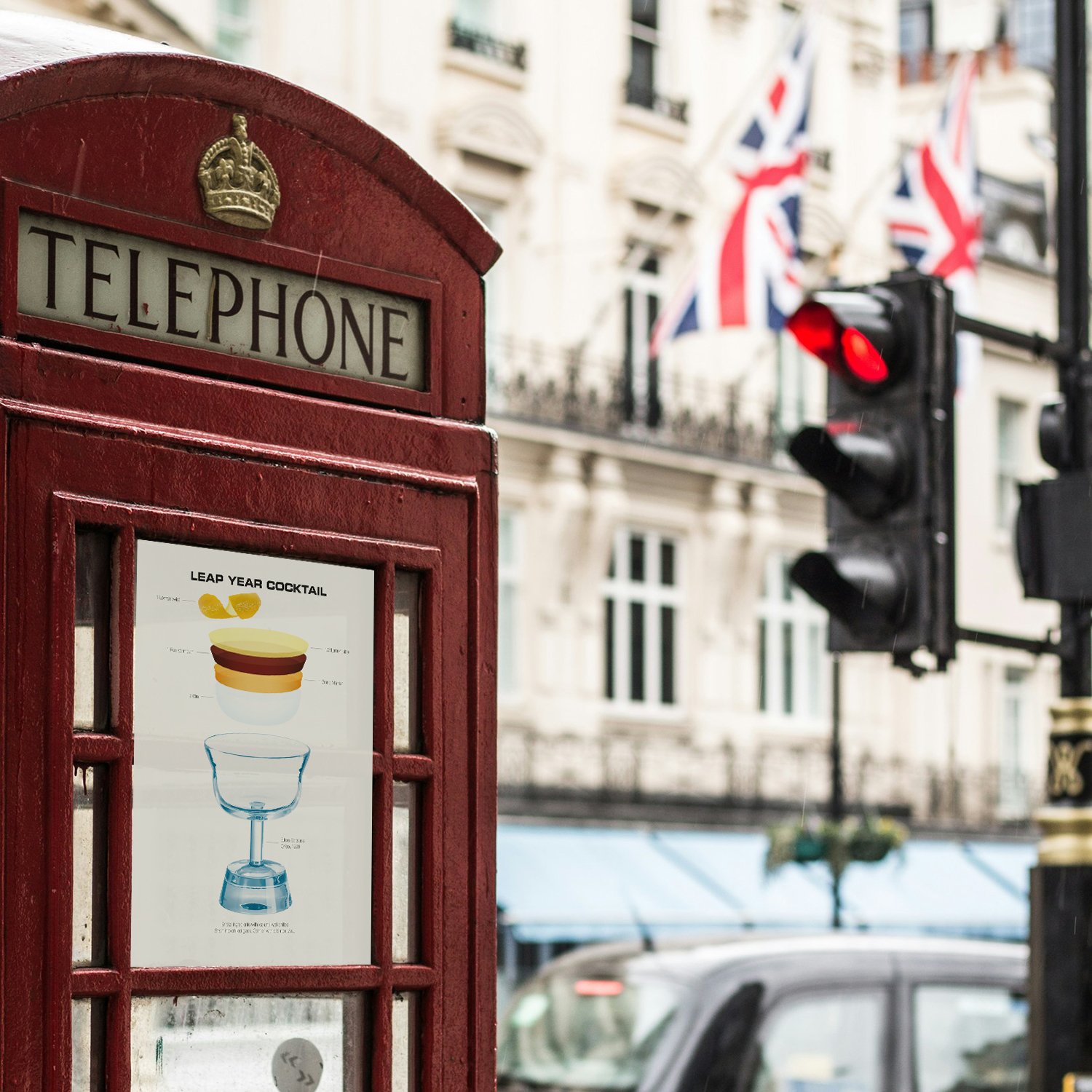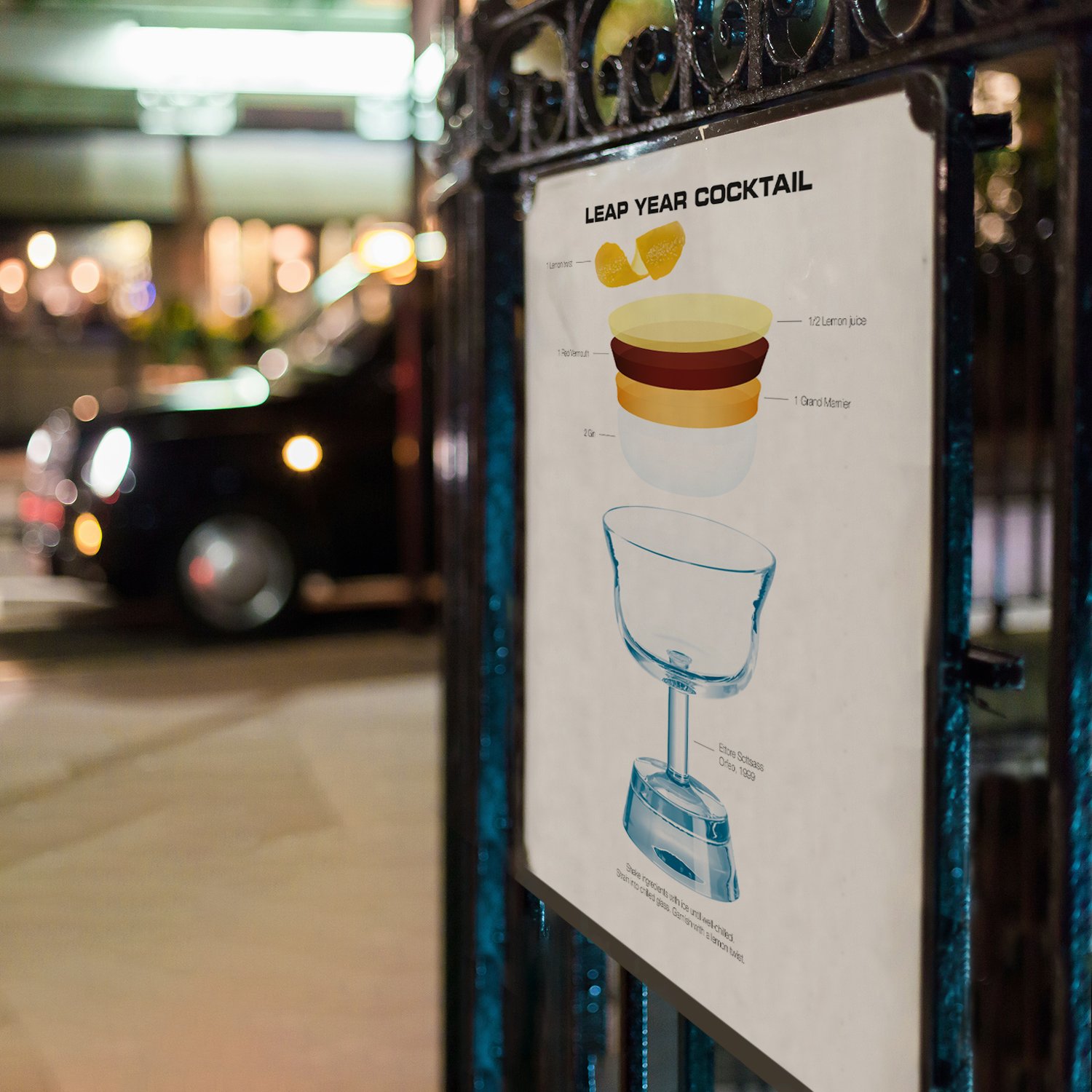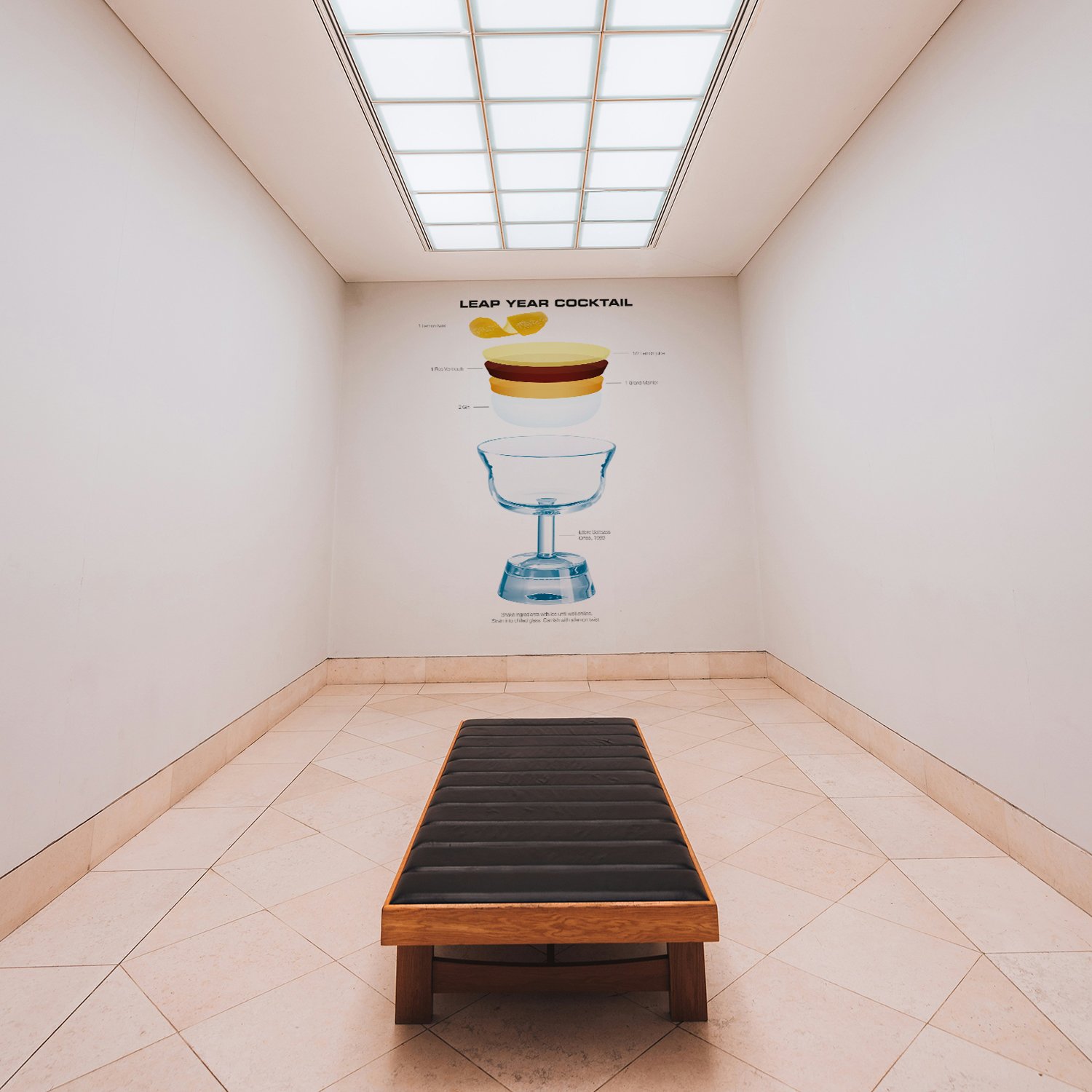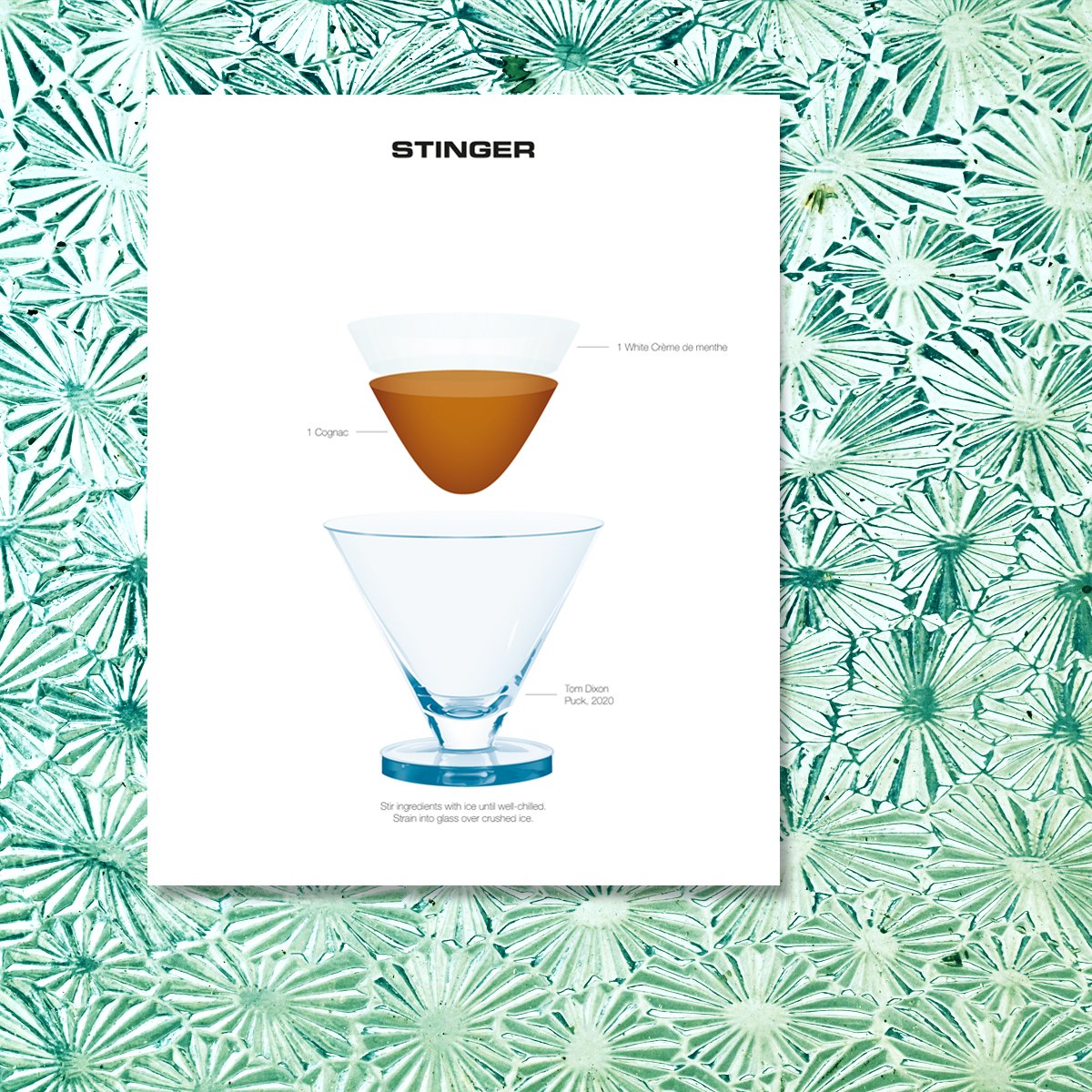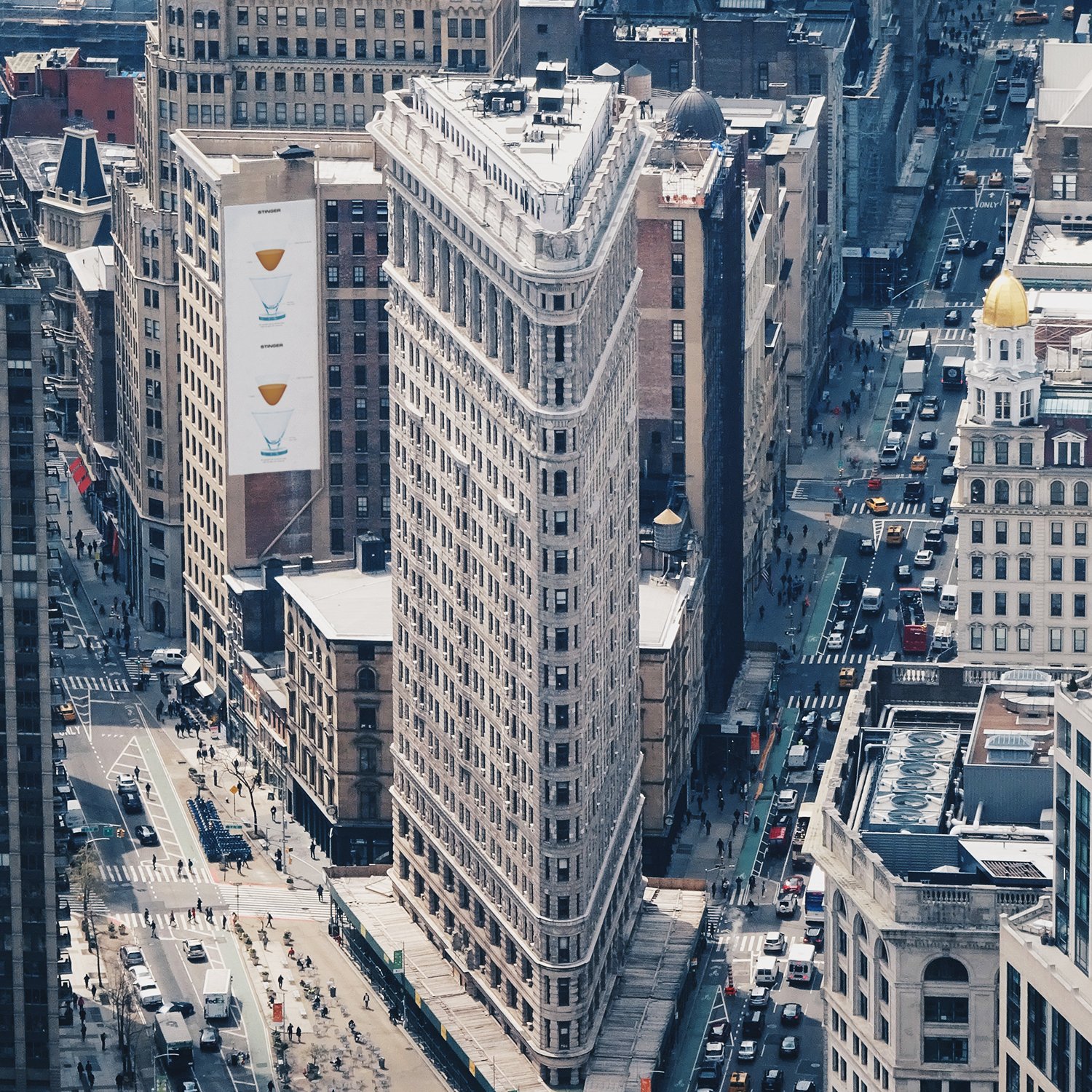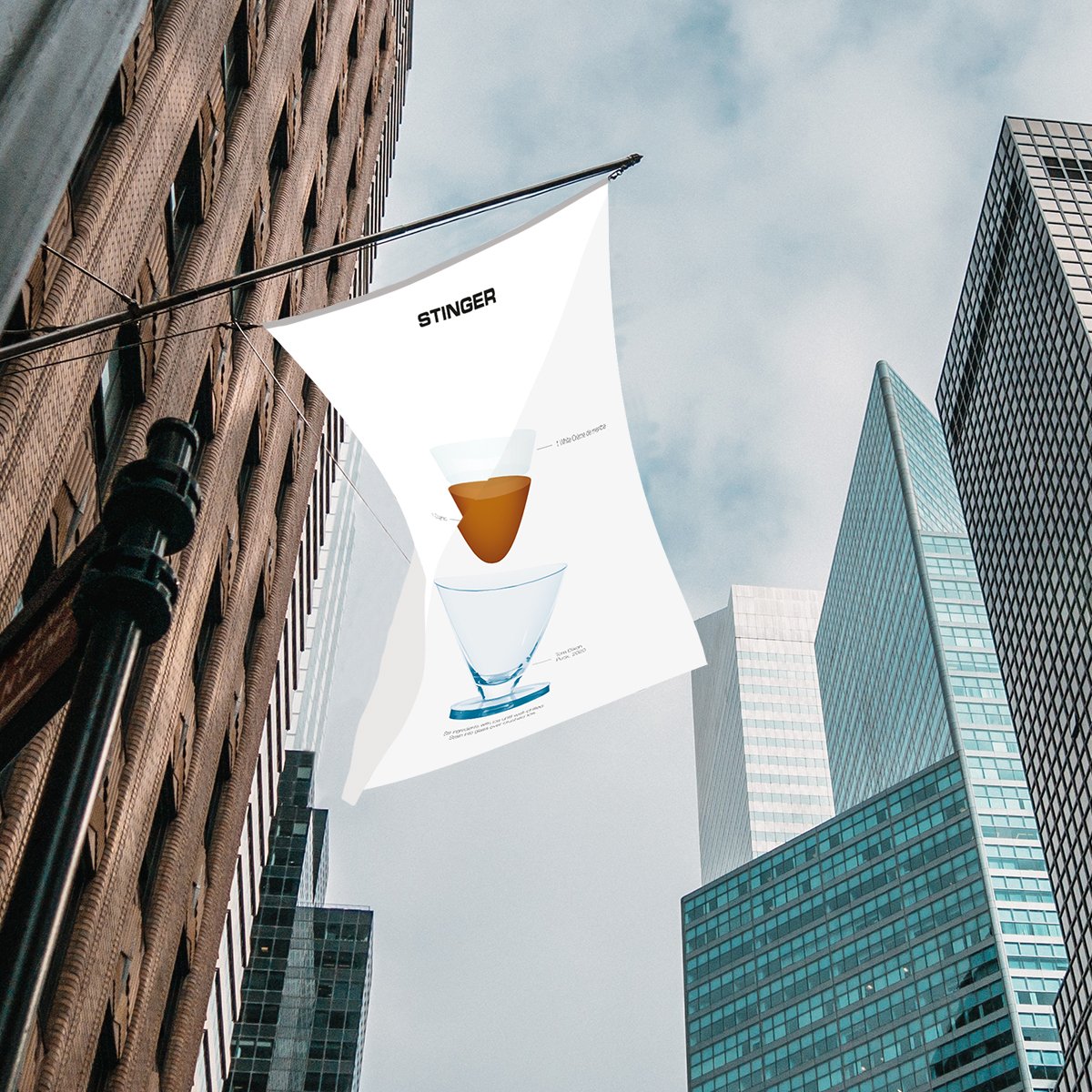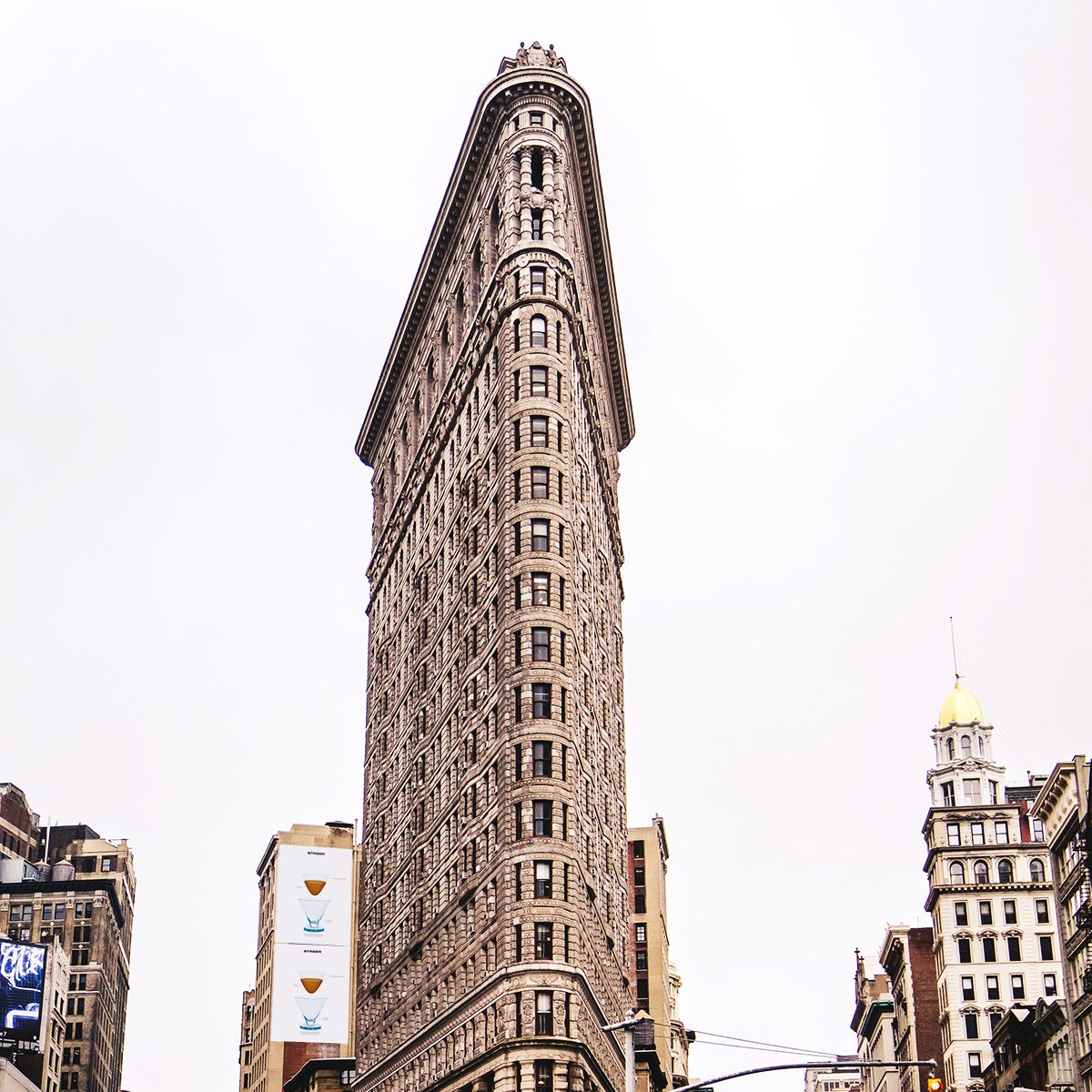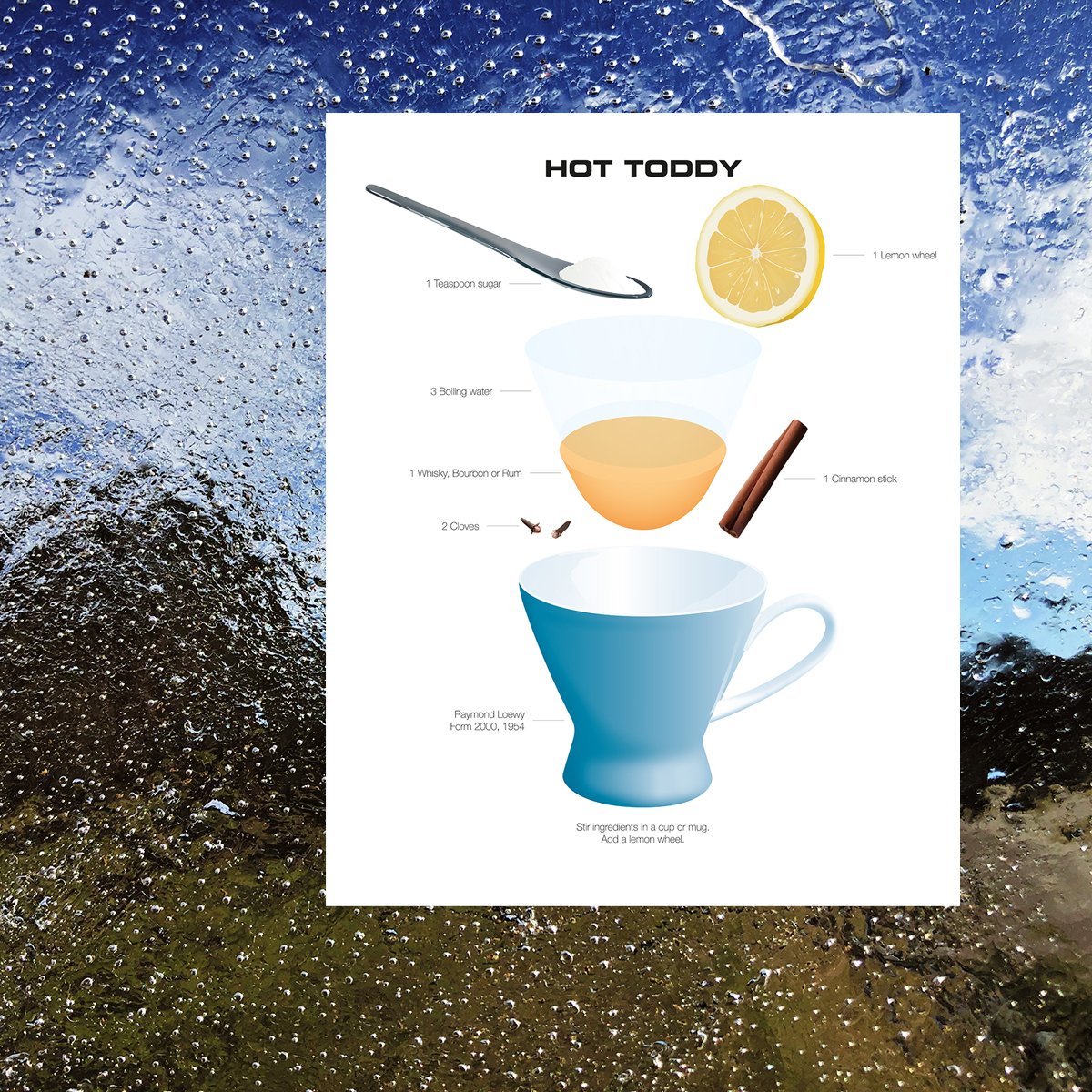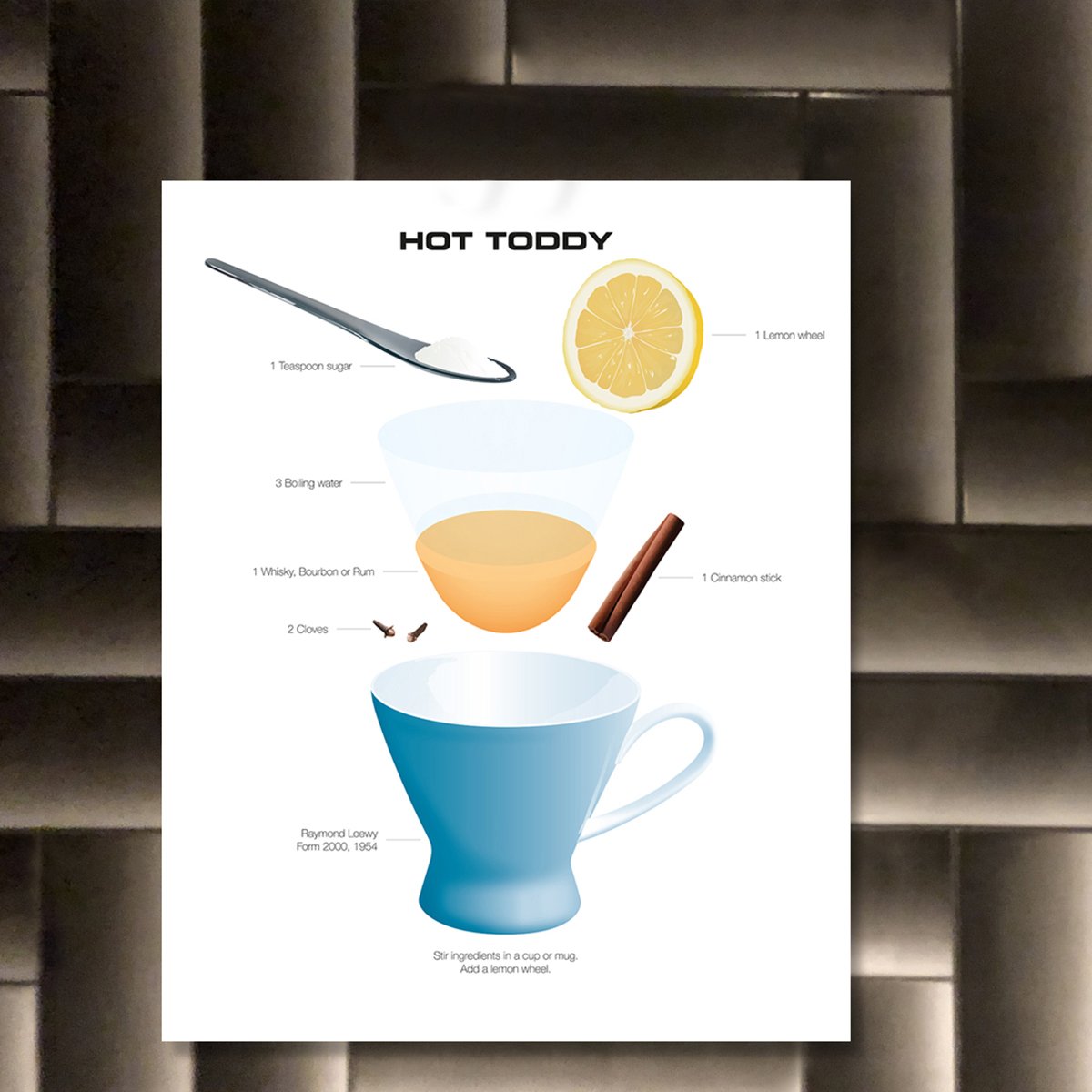The Kingdom of France had been controlling the Louisiana territory from 1682 until it was given up to Spain in 1762. In 1800 Napoleon wanted to re-establish a French colonial empire and got it back in exchange for Tuscany. With a war with England lurking he decided to sell it off to the United States in 1803 as part of the Louisiana Purchase. At the time of the purchase the Louisiana territory was enormous. It reached into Canada in the north, engulfing most of Montana, North Dakota, Wyoming and Minnesota, all of South Dakota, Iowa, Nebraska, Kansas, Missouri, Oklahoma and Arkansas as well as parts of Colorado, New Mexico and Texas along with Louisiana itself. The border to the north, southwest and the area east of the Mississippi were however disputed with Spain until 1812. After that, Louisiana was admitted to the Union as the 18th state on April 30, 1812, with basically the same borders as the present state.
THE VIEUX CARRÉ
Just like the Hurricane, the Sazerac and the Grasshopper, the Vieux Carré was created in the “Big Easy”, New Orleans. The name of the drink is French for old square or old quarter, being the original name of the New Orleans’ French Quarter. When ordering the drink the Creole way of saying it is Voo car-ray.
The cocktail was invented in the mid to late 1930s by Walter Bergeron, head bartender at the Carousel Bar in the Hotel Monteleone. The Hotel Monteleone opened in 1886 when a Sicilian nobleman, Antonio Monteleone, bought the hotel in the early 1880s. Still after five generations, the hotel still remains in the family. The Carousel Bar as you find it today was installed in 1949 and is decorated with paintings of circus animals and is lit up just like a real carousel, rotating at the smooth pace of 15 minutes per revolution.
The Saketini Just Turned 60
THE OPENING OF NEW YORK’S WORLD’S FAIR 1964
New York World’s fair ran two six-month periods, April 22 – October 18, 1964, and April 21 – October 17, 1965. It was held in Flushing Meadows-Corona Park in the borough of Queens, New York and featured over 140 pavilions and 110 restaurants, representing 80 countries. The fair was attended by more than 51 million people, but with an expected 70 million, it was far from an economic success. Meant to showcase the future many pavilions were built in a Mid-century modern style influenced by jet aircraft and the Space Age. The most popular pavilion was General Motors Futurama II, letting the visitors experience life in the “near future” with realistic 3D models. IBM featured a theater designed by Eero Saarinen showing a film by Charles and Ray Eames about computer logic. The most unexpected pavilion might have been the Vatican’s that incredibly brought Michelangelo’s priceless sculpture Pietà from St. Peter’s Basilica in Rome. Of course, there was also the Japanese pavilion where you could sample the novelty cocktail Saketini.
THE SAKETINI
The origins of the Saketini cocktail are not entirely clear. It is said to have been invented by Matsuda-san, a chef from Queens who introduced the drink at the Japanese pavilion at the New York World’s Fair in 1964.
After the World’s Fair the recipe for the Saketini was lost and the cocktail led an all but forgotten life until the Martini craze of the 1990s. Even though the Saketini was invented long before this the cocktail historian David Wondrich still puts the Saketini (maybe a bit unfairly) in “that sickly and dismal tribe” of chocolate martinis, mango martinis, and appletinis. Another possible origin story is that the Saketini was invented at the first Benihana restaurant on West 56th Street in New York City. Benihana was founded by 25-year old Hiroaki Aoki the same year as the World’s Fair, in 1964, and the cocktail is said to first having been made the year they opened.
THE DESIGNER
The Japanese glassware designer Masakichi Awashima as born in 1914. After graduating from the Japan Art School in Tokyo he worked for Kozo Kagami who had learned western glass blowing techniques in Germany. The sake cup was designed by Awashima in 1958.
How To Mix It
Preparations.
I am happy to have been chosen to hold a cocktail class teaching how to make some remarkable cocktails from A Year of Cocktails along with some basics. What to shake, stir and build and how does the different techniques change the cocktail. For the class I picked four different cocktails and a bonus one starting with the Moonwalk, Joe Gilmore’s cocktail to celebrate the moon landing. The next three were Ada “Coley” Coleman’s Hanky Panky from the 1920s, The Sazerac by Antoine Peychaud from 1838, and finally Trader Vic’s Mai Tai from 1944. As a bonus I added the Whiskey Sour so that the participants would be able to practice a dry shake. It’s always great to be able to share some cocktail tips along with the cocktail history, which was essentially the purpose of A Year of Cocktails in the first place.
World Vermouth Day
Today is another day worth celebrating, it is World Vermouth Day. It was created by Giancarlo Mancino to celebrate this particular type of fortified wine. Vermouth is an aromatized fortified wine, flavored with various botanicals (herbs, bark and roots). The name comes from wermut, the German word for wormwood. The vermouth as we know it today originated in the Italian city of Turin in the late 18th century and was made popular by the Italian distiller Antonio Benedetto Carpano. In fact, his vermouth was so popular that his shop was said to have been open around the clock.
A great way to celebrate is to make an Algonquin created sometime during the 1920s at the Algonquin Hotel in New York.
The Algonquin
2 parts Rye Whiskey
1 part Dry Vermouth
1 part Pineapple juice
1 Maraschino cherry
Shake all ingredients with ice. Strain into a chilled glass. Garnish with a Maraschino cherry.
Pierre Ordinaire And the Green Fairy
March 5 is the day to celebrate the “Green Fairy”. In the early 1790s a French doctor with the interesting name Pierre Ordinaire did something out of the ordinary. In the town of Neuchâtel, Switzerland he created a distilled patent medicine that was the first version of absinthe. Just a few years later, in 1797, the recipe was bought by Henri Louis Pernod, of later pastis fame, who started an absinthe distillery in Couvet, Switzerland. During its peak in 1910 the French consumed a staggering 36 million liters of absinthe per year. Poor quality, and sometimes even toxic, absinthe together with a highly publicized Swiss murder case, turned public opinion against absinthe and led to its downfall. With the help of the temperance movement many countries declared an outright ban. Belgium banned the drink in 1905, followed by Switzerland and the Netherlands in 1910, and the United States in 1912. The U.S. Pure Food Board called it “one of the worst enemies of man, and if we can keep the people of the United States from becoming slaves to this demon, we will do it.” Finally in 1915 even France, the center of absinthe culture, declared absinthe illegal along with many other countries around the world. It took until 2001 for absinthe to become lawful again.
Death In the Afternoon
1 jigger Absinthe
Champagne
1 Lemon twist
According to the drinks creator, Ernest Hemingway, you make it like this. “Pour one jigger of absinth into a champagne glass. Add iced Champagne until it attains the proper opalescent milkiness. Drink three to five of these slowly.” My guess is that after five Death In the Afternoons you won’t do much else that day.
Taking the Leap
The Leap Year Cocktail is one of the few with a very clear and concise history. It was made by the bartender legend Harry Craddock, head bartender at the American Bar in London’s Savoy Hotel. More specifically it was created for the hotels Leap Year celebration on February 29, 1928.
Two years earlier Harry Craddock had taken over as head bartender after another legend, Ada Coleman, was pushed out of the bar when The Savoy wanted to install an American as head of their American Bar. In reality Craddock was just American sounding. He was a Brit that had been working in the US, where he picked up an American accent. It was however good enough for Savoy.
The cocktail is presented in Craddock’s Savoy Cocktail Book with a note “It is said to have been responsible for more proposals than any other cocktail that has ever been mixed.” Maybe because of the Irish tradition that on this rarest of days women could propose to men. According to the tradition, if the man refused the proposal, he had to buy the woman a silk dress, or from the mid 20th century, a fur coat. In the upper classes of other European countries, taking over the Irish custom, any man refusing a woman’s Leap Day proposal had to buy her 12 pair of gloves. Possibly so that she could hide the fact that she was not carrying a ring.
The glass was designed in 1999 by the Italian designer Ettore Sottsass, inspired by Greek mythology.
Happy Birthday Reginald Vanderbilt
The Stinger is a classic pre-Prohibition cocktail, likely created at the beginning of the 20th century. Possibly made as a simplified version of the Judge, a cocktail from 1890 made with brandy, crème de menthe and simple syrup. The first time it appeared in print was in 1914 in a book simply called Drinks by Jacques Straub. The cocktail historian David Wondrich wrote in his book Imbibe that an Ohio newspaper have credited Reginald Vanderbilt with the cocktail. The newspaper claimed in 1923 that Vanderbilt had served his guests Stingers since the early days of the 1900s, writing that he “was observed in all its pomp and glory in the bar of his home, and he himself was the high priest, the host, the mixer.” The article described the drink as “a short drink with a long reach, a subtle blend of ardent nectars, a boon to friendship, a dispeller of care.” According to legend Vanderbilt spent three hours a day mixing them for his guests during cocktail hour at his Fifth Avenue mansion. Reginald Vanderbilt can also be credited, if that is the right word, for making this classic after dinner cocktail to an aperitif. Unfortunately Reginald Vanderbilt liked both gambling and Stingers a bit too much. When he passed away in 1925 at the age of 45 he had, according to the Washington Post, squandered the fortune left to him by his grandfather. “No one can make money evaporate into thin air like a Vanderbilt”, as Anderson Cooper put it in his book Vanderbilt. The Rise and Fall of an American Dynasty.
The Stinger has since the days of the Vanderbilts been associated with the upper echelons of society and is featured in many movies like High Society from 1956 with Frank Sinatra and Bing Crosby. It was also part of the plot in Kiss Them for Me from 1957 when Cary Grant asks a bartender to “keep the Stingers coming” to be able to deal with an overtly talkative character played by Jayne Mansfield. James Bond drinks a Stinger in the 1956 Diamonds Are Forever since Ian Fleming, along with many other writers, was a big fan himself. Evelyn Waugh considered the Stinger to be his signature cocktail.
The Designer
Tom Dixon was born in Tunisia in 1959 and moved to England in 1963. He started his career as a self taught designer during the 1980s and soon got noticed for his line of welded salvage furniture. In 1987 he made a prototype for his famous S-Chair that was picked up by the Italian furniture company Cappellini who have manufactured it since 1991. Dixon has made a name for himself as an incredibly versatile designer making everything from furniture, lighting, accessories and interiors. The Puck cocktail glass was designed by Dixon in 2020 using the basic forms of geometry.
Reginald Vanderbilt’s Birthday
Reginald Claypoole Vanderbilt was born on January 14, 1880 into the wealthiest family in the United States. He was the great grandson of railroad tycoon Cornelius Vanderbilt and was famous for gambling and his love of cocktails, especially the Stinger. He is even more famous for fathering the fashion designer and socialite Gloria Vanderbilt and being the grandfather of the journalist, writer and news anchor Anderson Cooper.
Happy Hot Toddy Day
The history of the Toddy dates all the way back to British-controlled India in the early 17th century. The Hindi word “taddy” meant “beverage made from fermented taddy palm sap” a drink that was served cold. By 1786 the British had changed the official meaning of taddy and defined it as “a beverage made of alcoholic liquor with hot water, sugar, and spices.” The British claimed it as their own and started serving it in pubs during the winter months using Scotch whisky, hot water and exotic spices from India.
At the time of the American revolutionary war in 1775 the Hot Toddy had reached North America. The soldiers exchanged the Scotch to rum and brandy and drank it before battle as a “liquid courage.”
Another story tells of a 19th-century Irish physician, a Dr. Robert Bentley Todd who used to prescribe his patients a mix of brandy, cinnamon, sugar and hot water, making it a Toddy. An article in a Vermont newspaper from 1837 about “How to Take Cold” made the Hot Toddy out to be a cure-all. The trick, the article stated, if your child begins to snuffle, has a fever and you don’t want to call on a doctor, is to first feed it excessive amounts and then give it a Hot Toddy. These recommendations have changed a bit since.
Dubbed by the press as “The Man Who Shaped America” Raymond Loewy was an American industrial designer born in Paris, France in 1893. Loewy moved to New York in 1919 where he first worked as an illustrator for Vogue and Harper’s Bazaar. During his career he made everything from streamlined locomotives, buses, cars, interiors for the Concorde and for the Apollo space mission to logos for Exxon, Shell, TWA, BP. He designed the cup, Form 2000, in 1954 for Rosenthal.
Celebrate the Hot Toddy Day with this magnificently warming drink made with your favorite barrel aged spirit. Be it rum, whisky, bourbon, brandy or cognac.
Bloody Mary Day, January 1
After a long night of New Years Eve parties, January first was the natural candidate for becoming Bloody Mary Day even though a Tomato Juice Cocktail or a Virgin Mary might be better for recuperating.
The predecessor to the Bloody Mary drink was the Oyster Cocktail, a drink that reportedly came to London from the Manhattan Club in New York in 1892. The drink closely resembles a modern day Bloody Mary save for the fact that it was non-alcoholic, was served warm and contained seven small oysters. It quickly evolved into the still alcohol free Tomato Juice Cocktail that was extremely popular as a health tonic during the 1920s. The Bloody Mary is often attributed to a bartender named Fernand “Pete” Petiot, who is said to have created his first version in the early 1920s at Harry’s American Bar in Paris. After Prohibition, Petiot moved to New York where he presided over the King Cole Bar at the St. Regis Hotel. Here he enhanced the drink with horseradish, Tabasco, lemon juice and celery salt creating the drink we know today. But as with most classic drinks there are several origin stories.
The Vaudeville performer and Hollywood actor George Jessel claimed he created the Bloody Mary in 1927. After a heavy night of drinking in Palm Beach he and a friend were still at it at 8 am. Having a volleyball date with a Vanderbilt at 9.30 he asked the bartender for a hang over and sobering up cure. The bartender reached for a bottle gathering dust at the bottom shelf, a bottle of vodka. Thinking it smelled like rotten potatoes he asked for Worchestershire Sauce, tomato juice and lemon to cover it up. Feeling better he realized he had created a new drink. A friend called Mary came into the bar still wearing her white evening gown. Trying the drink she spilled it over her dress and exclaimed “Now you can call me Bloody Mary.”
For this special occasion I made a riff on the classic Bloody Mary, making it into a cocktail. Blend 6 cocktail tomatos (instead of tomato juice) together with the rest of the ingredients. Pour into a shaker and shake until ice cold. Double strain into a cocktail glass. Decorate with a cocktail tomato on a cocktail skewer.
Happy New Year of Cocktails
A brand New Year is here starting the Year of Cocktails. The gaol is to make all of the 52 cocktails that are presented in our almost brand new cocktail book. Starting with the Bloody Mary Day on January first and all the way until the end of 2024 with the last cocktail on the list being the true classic, the Champagne Cocktail.
We all hope 2024 is going to be an amazing year, specifically an amazing year of cocktails.

